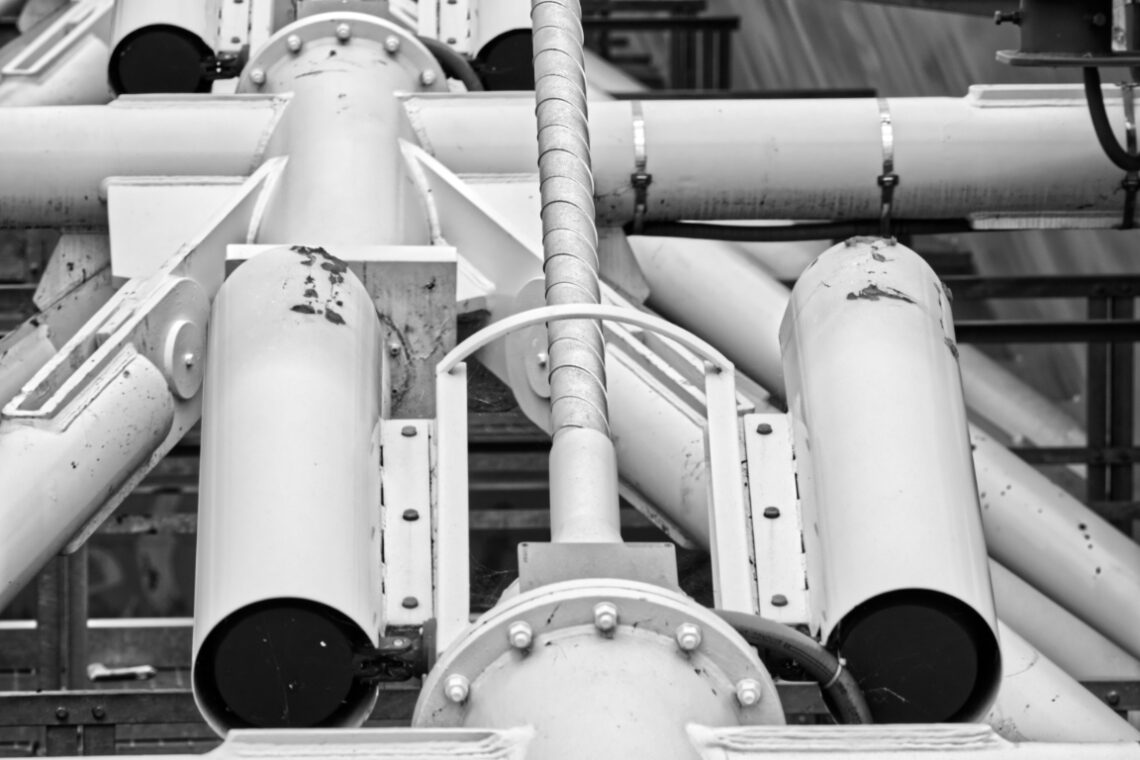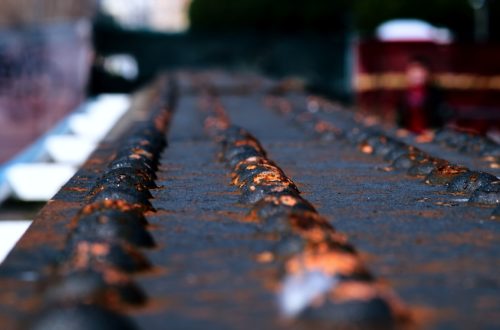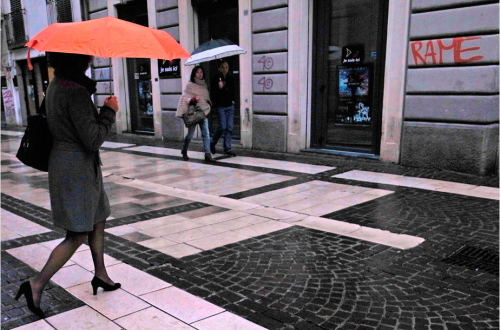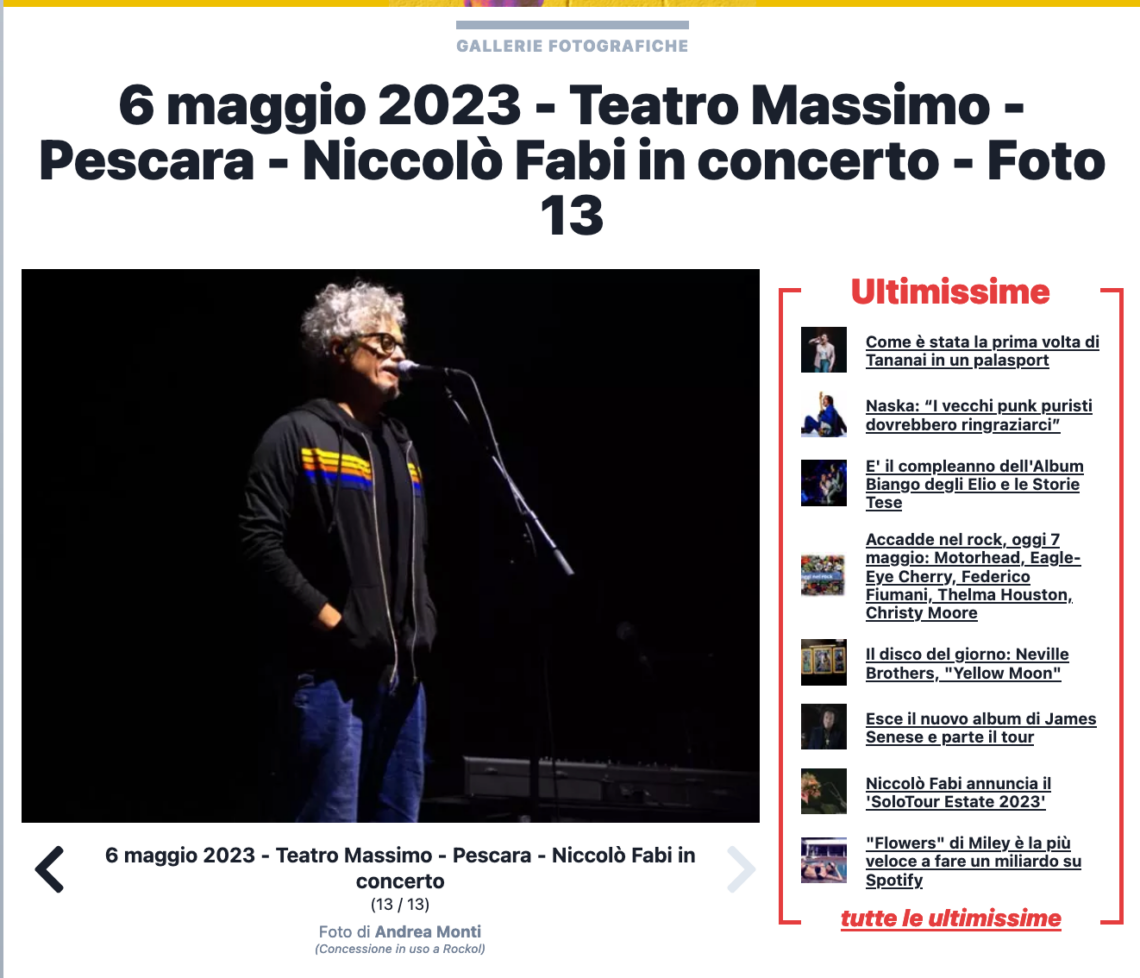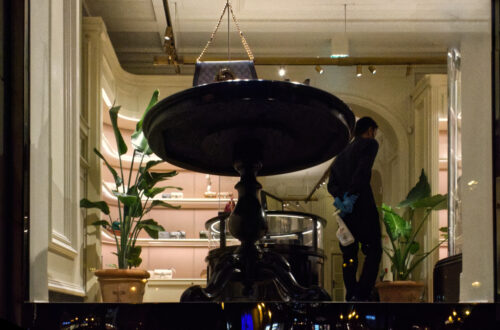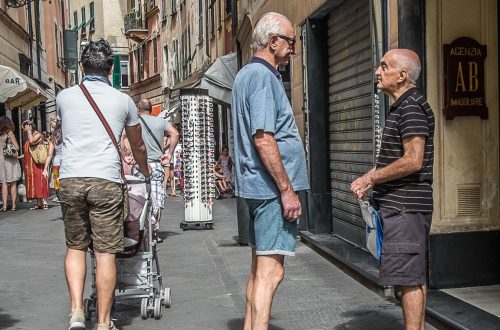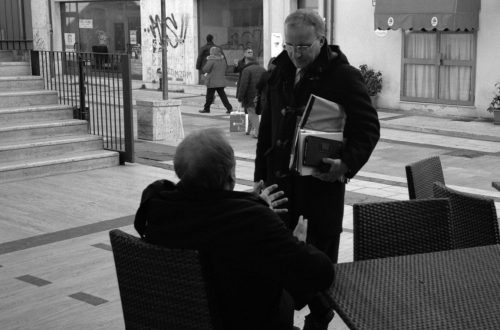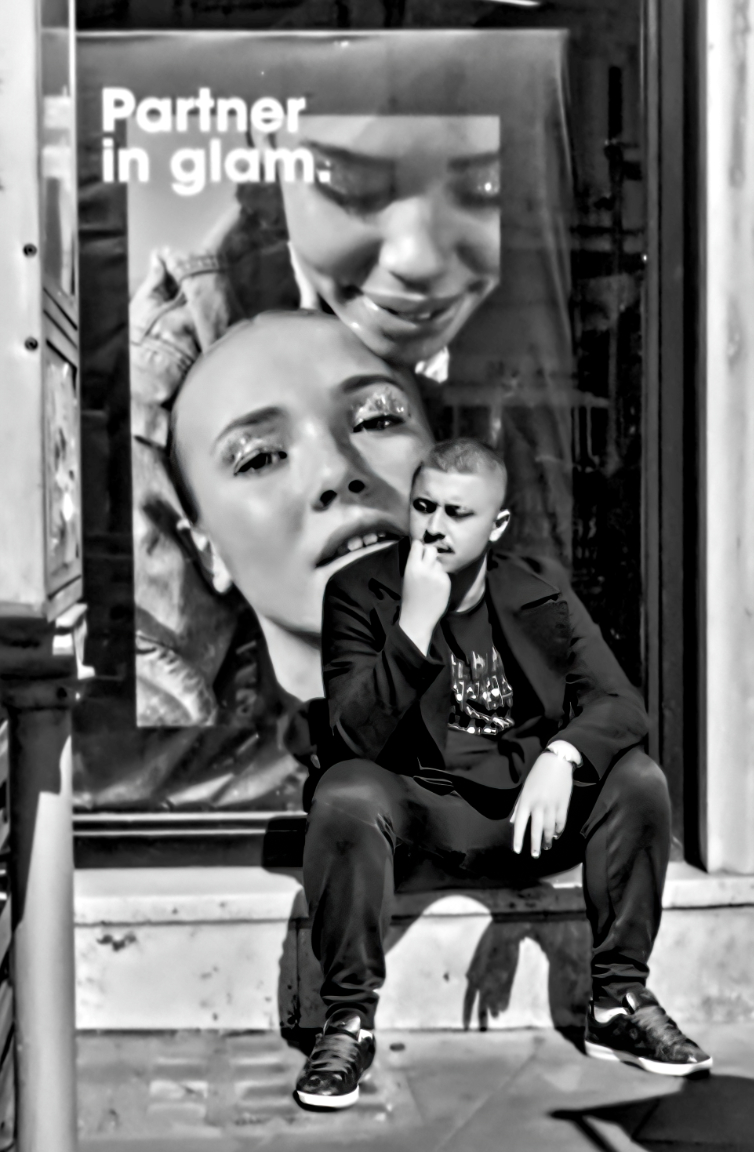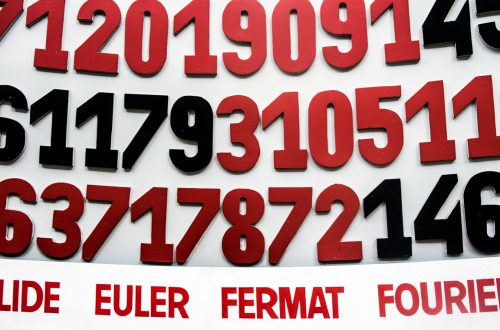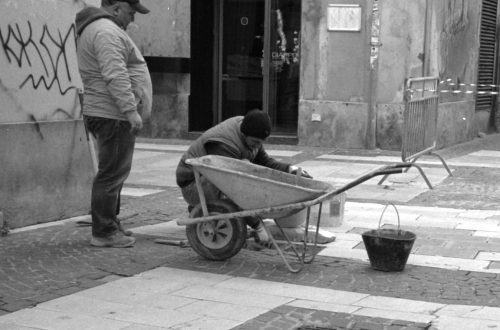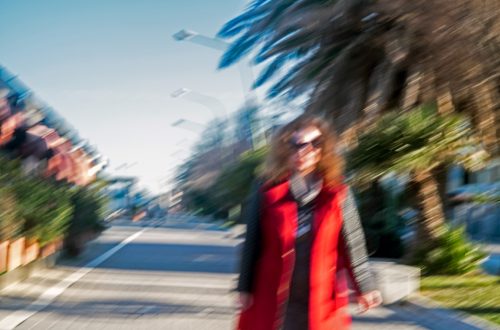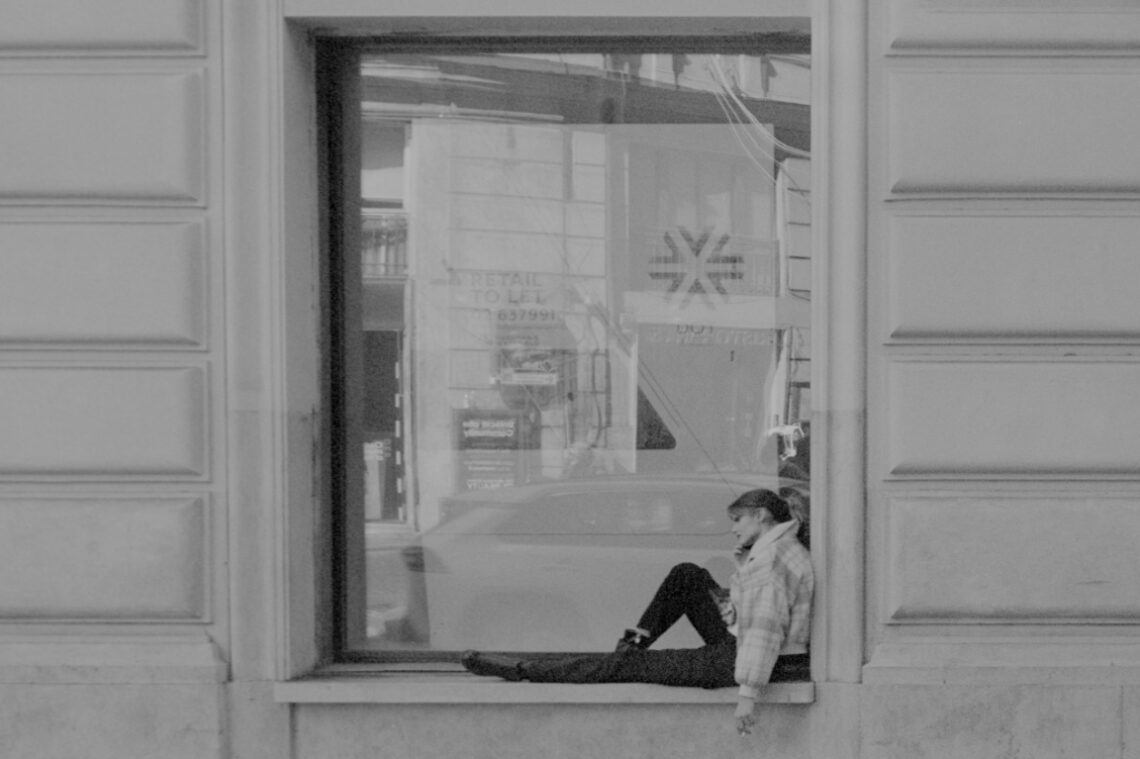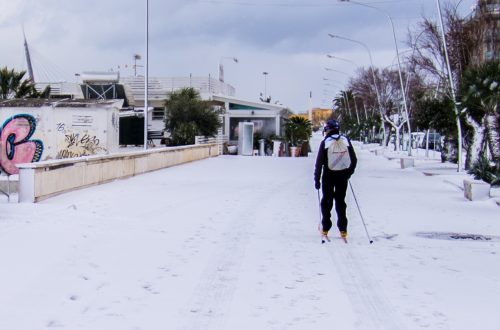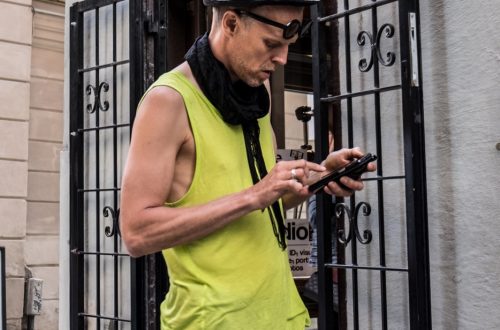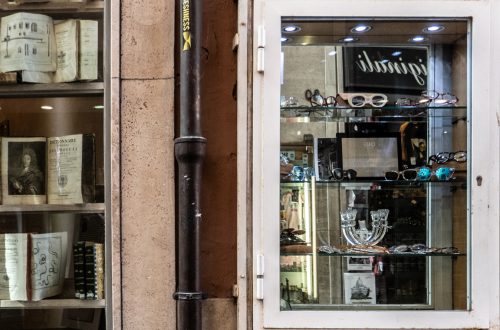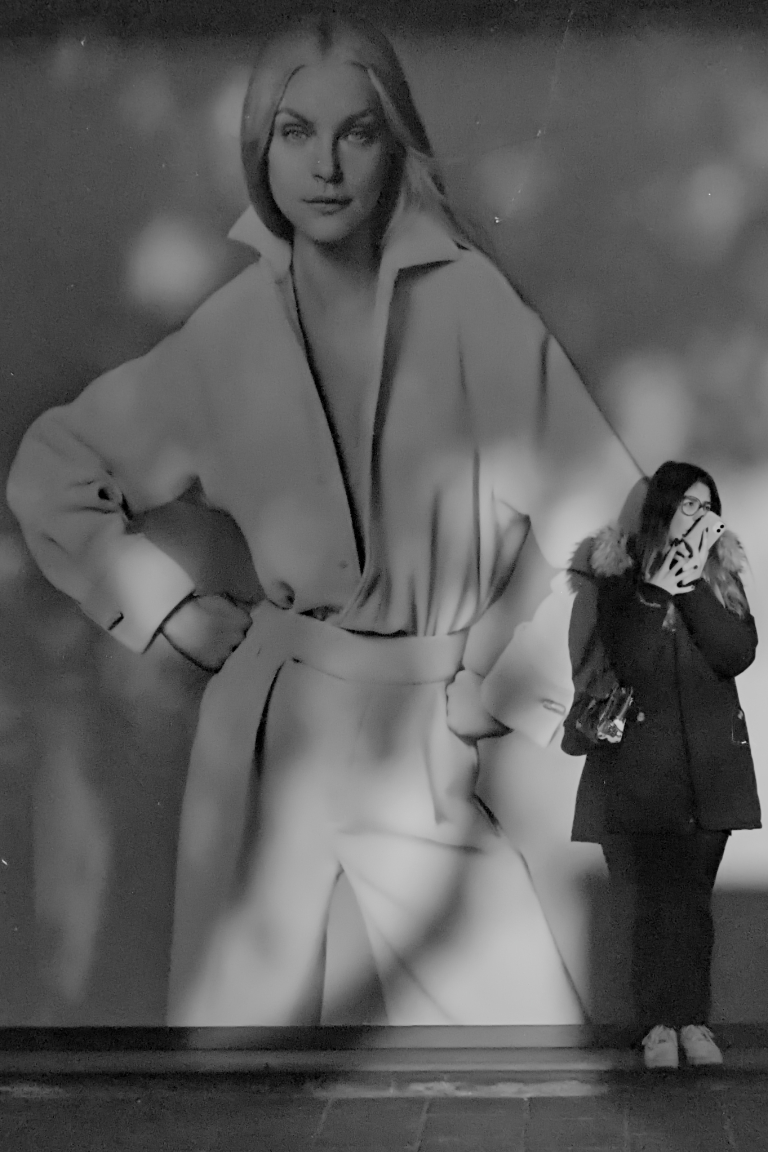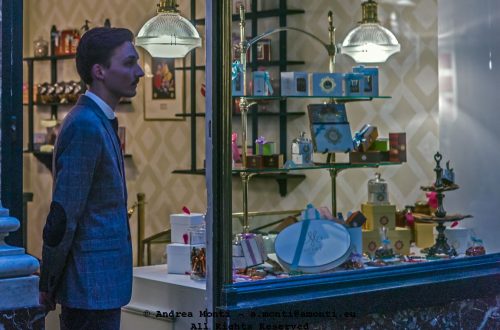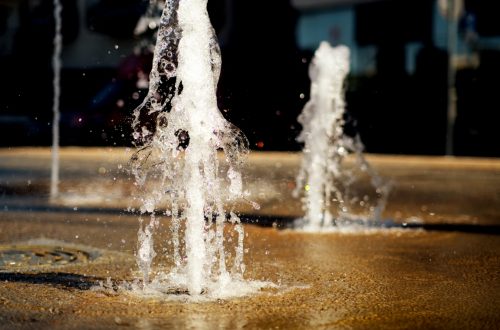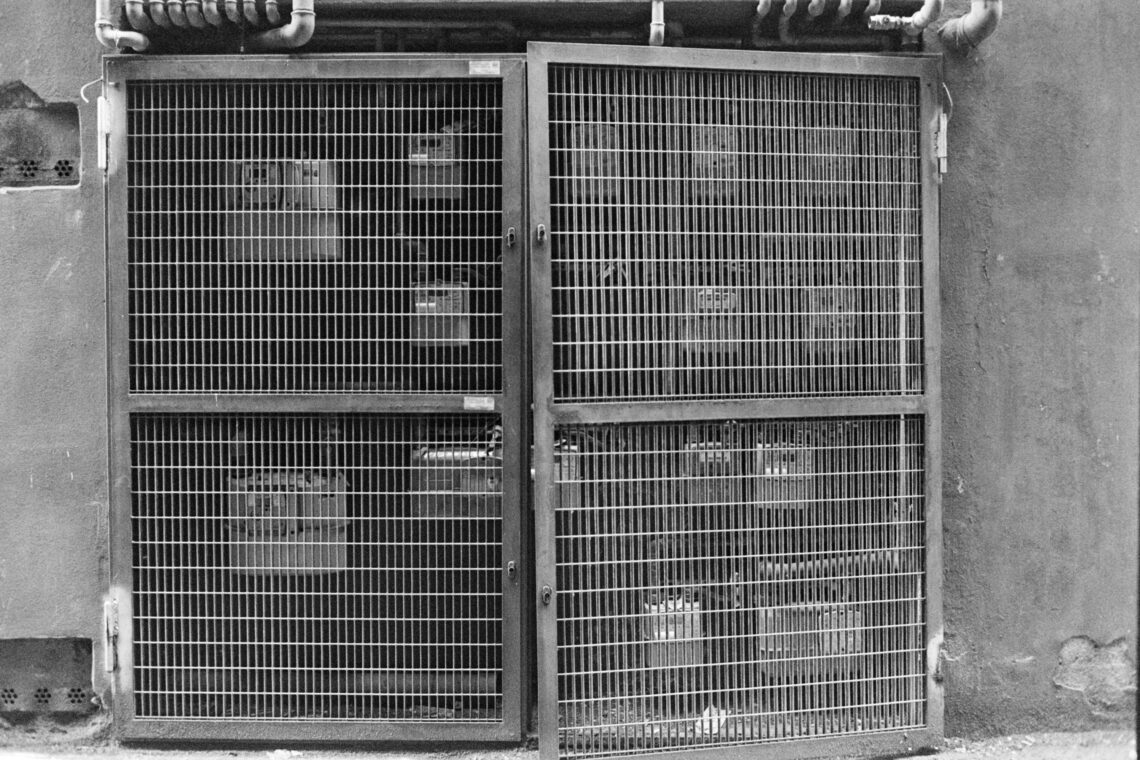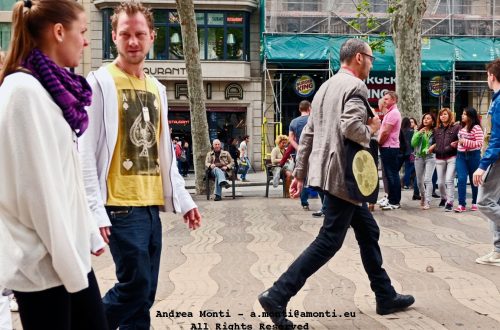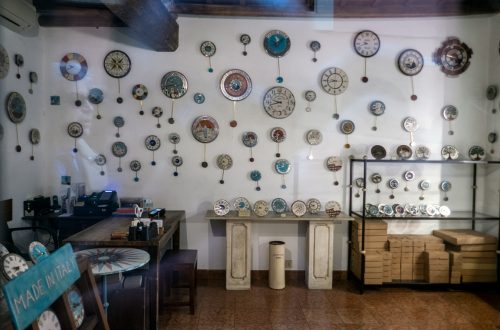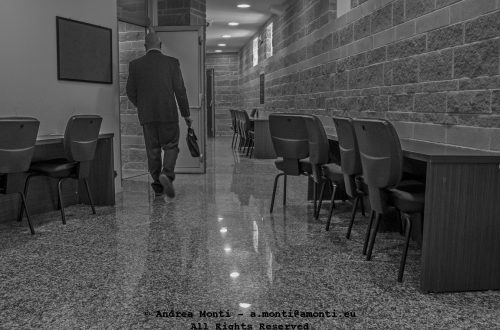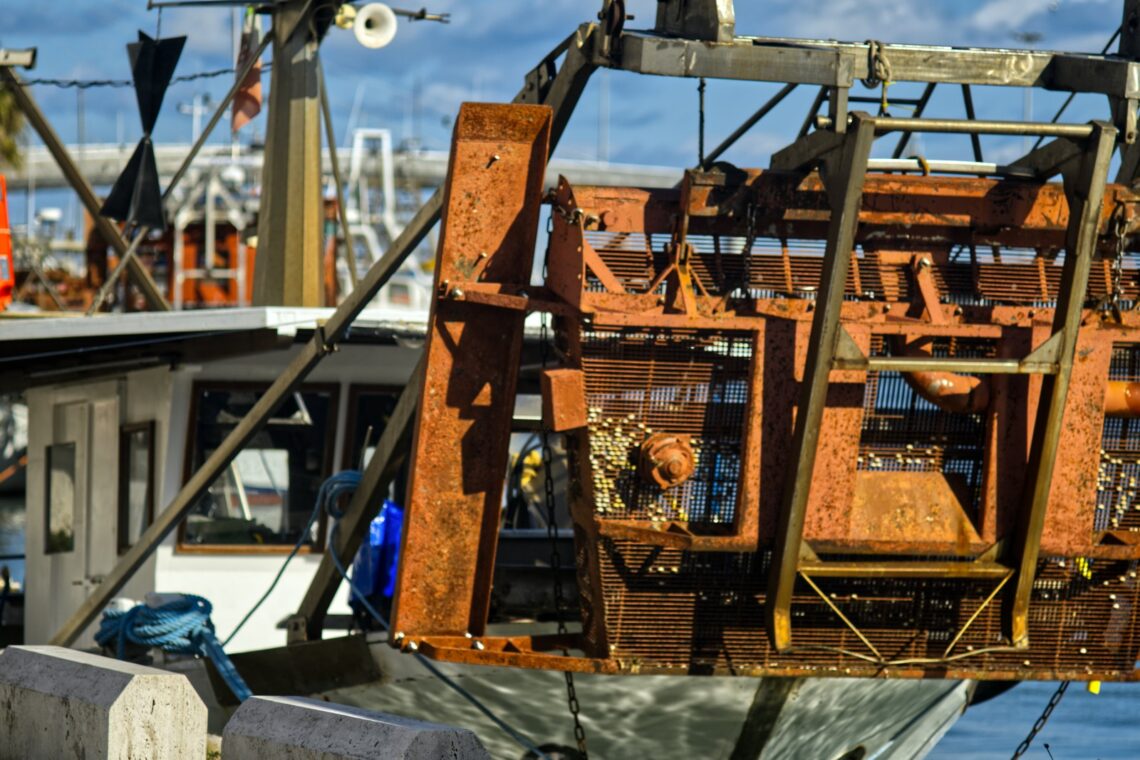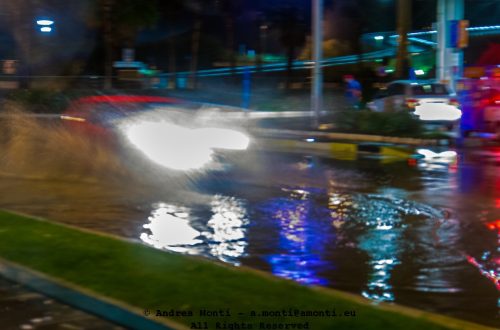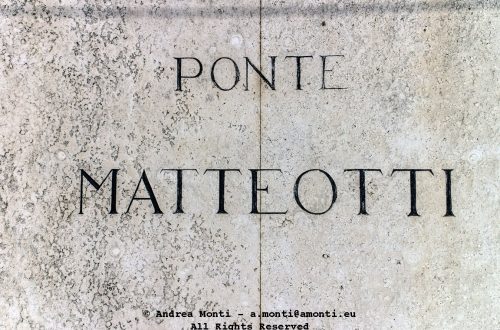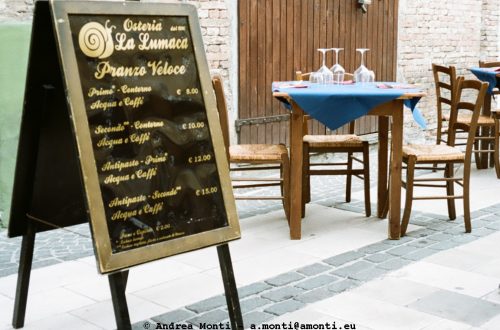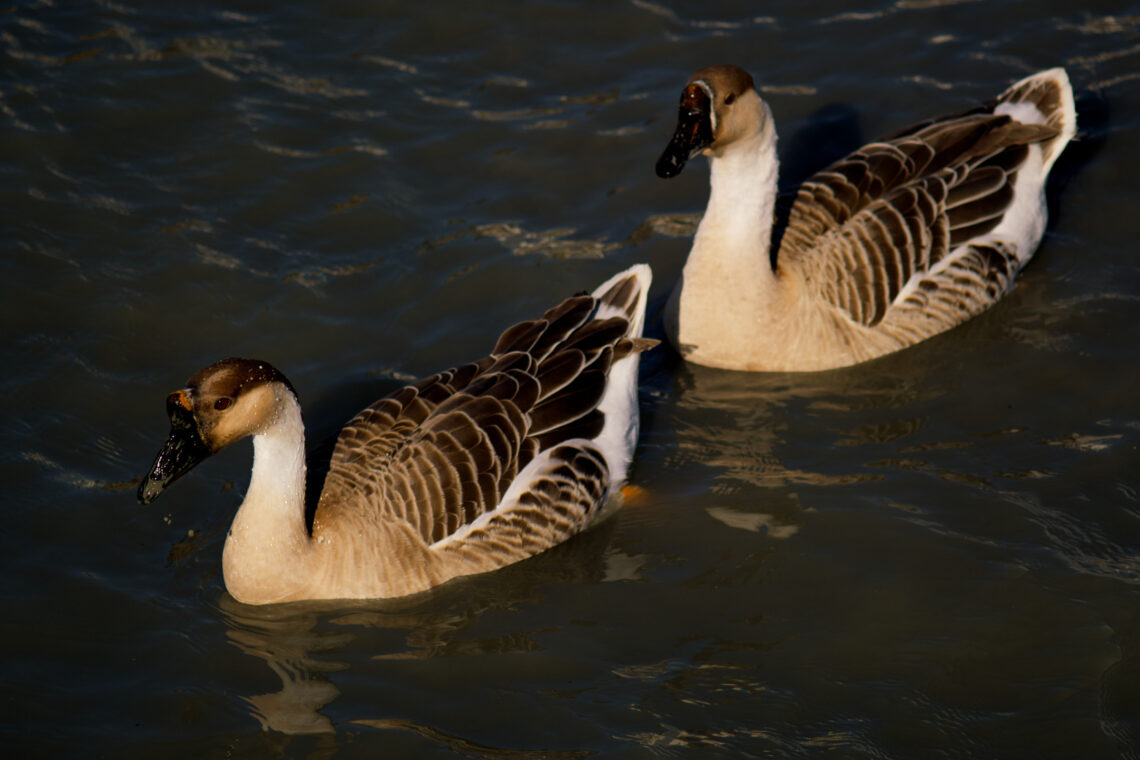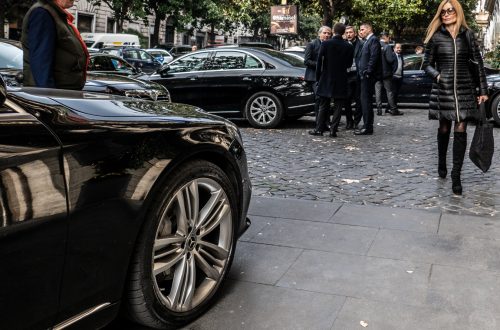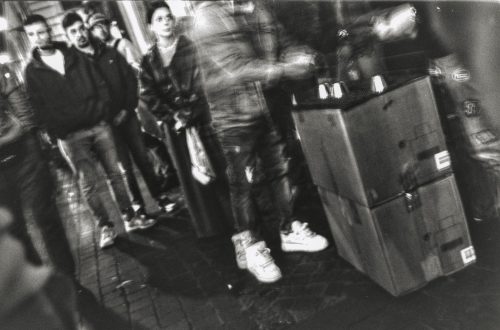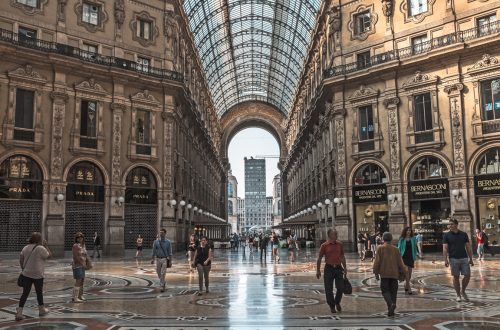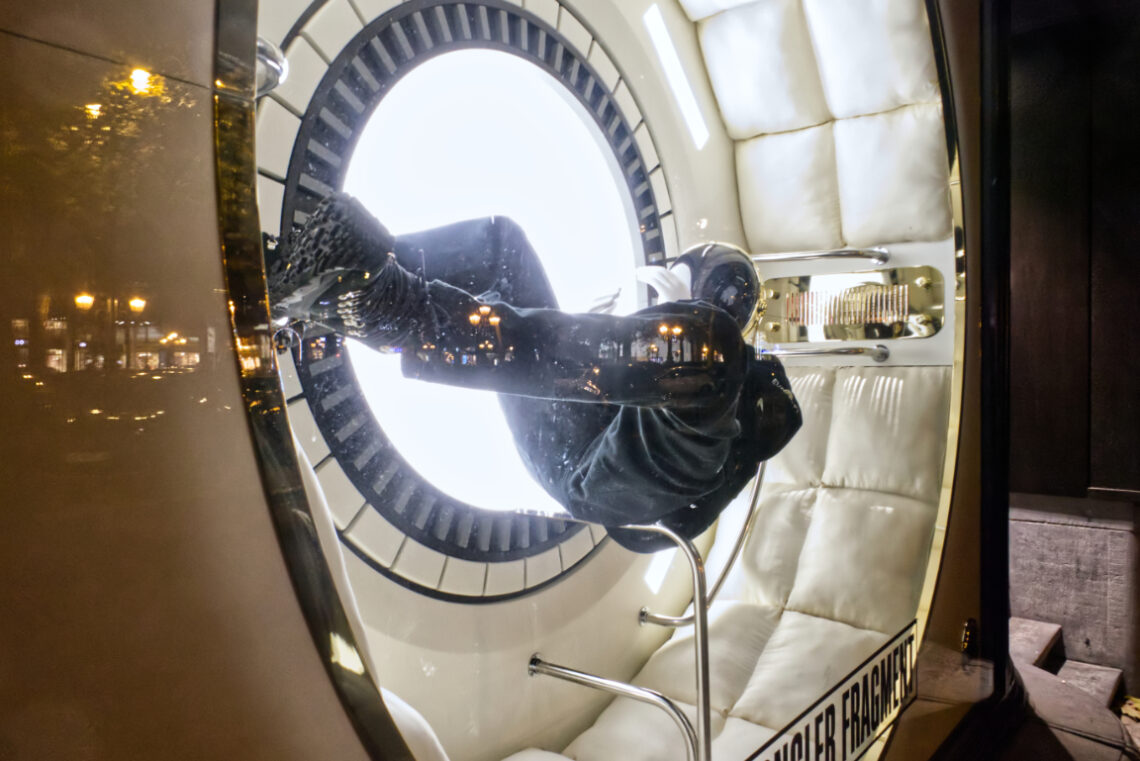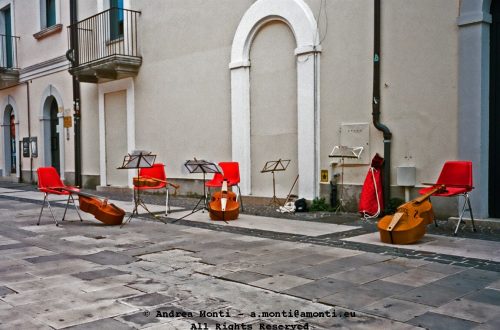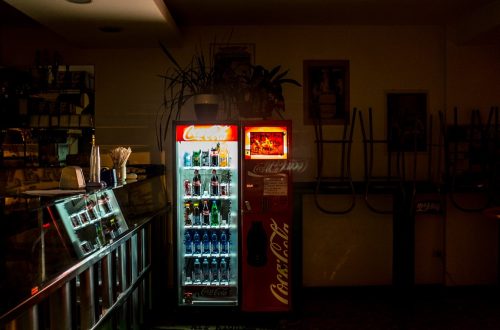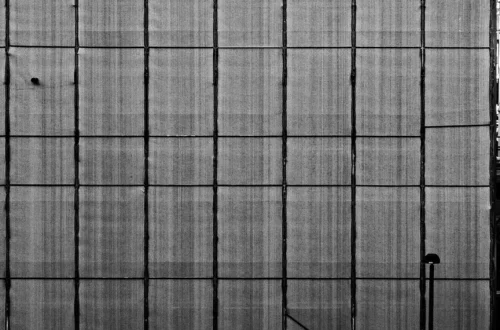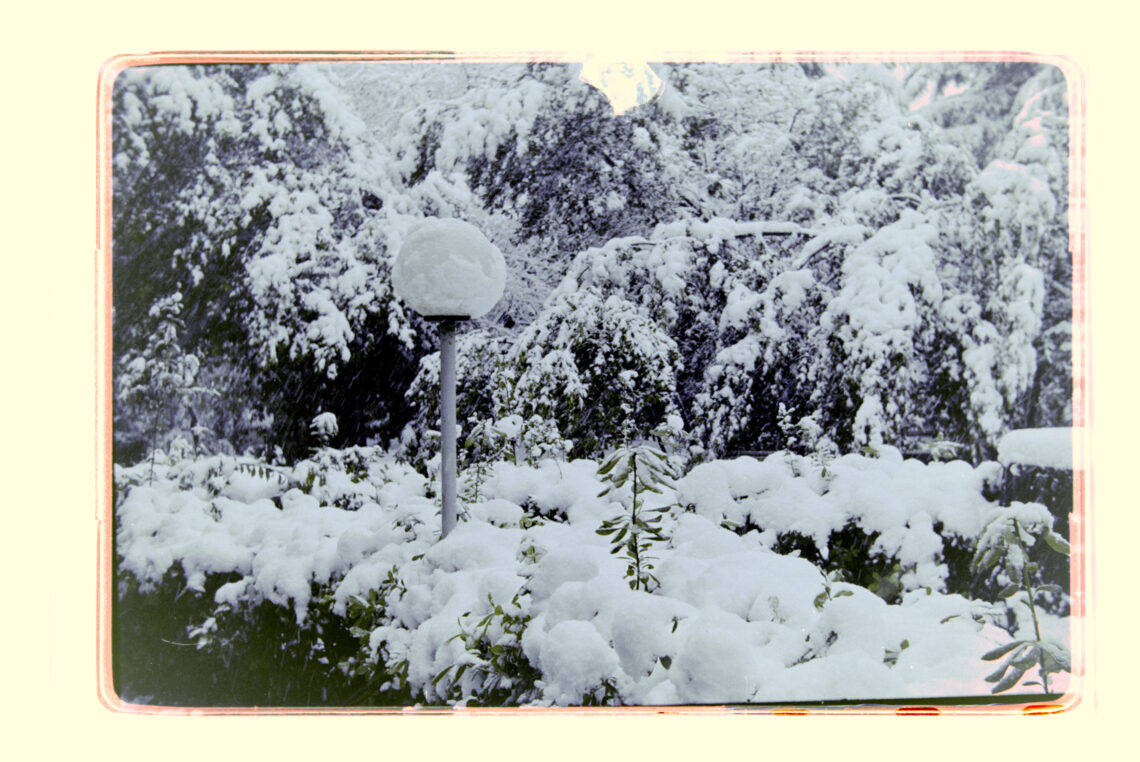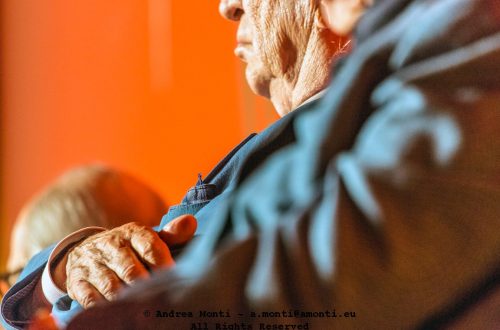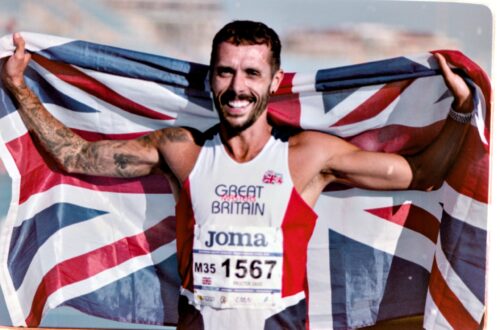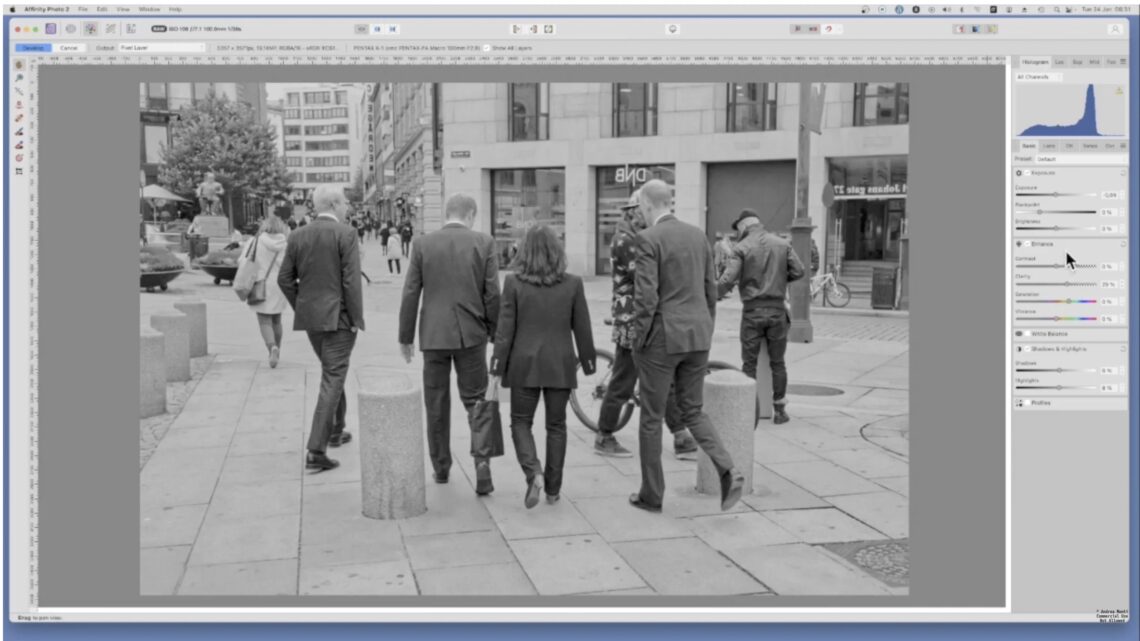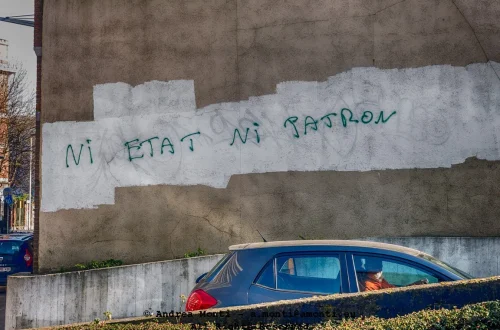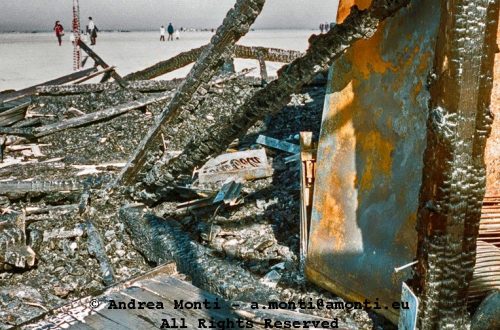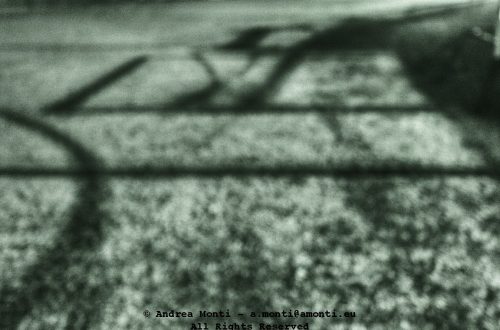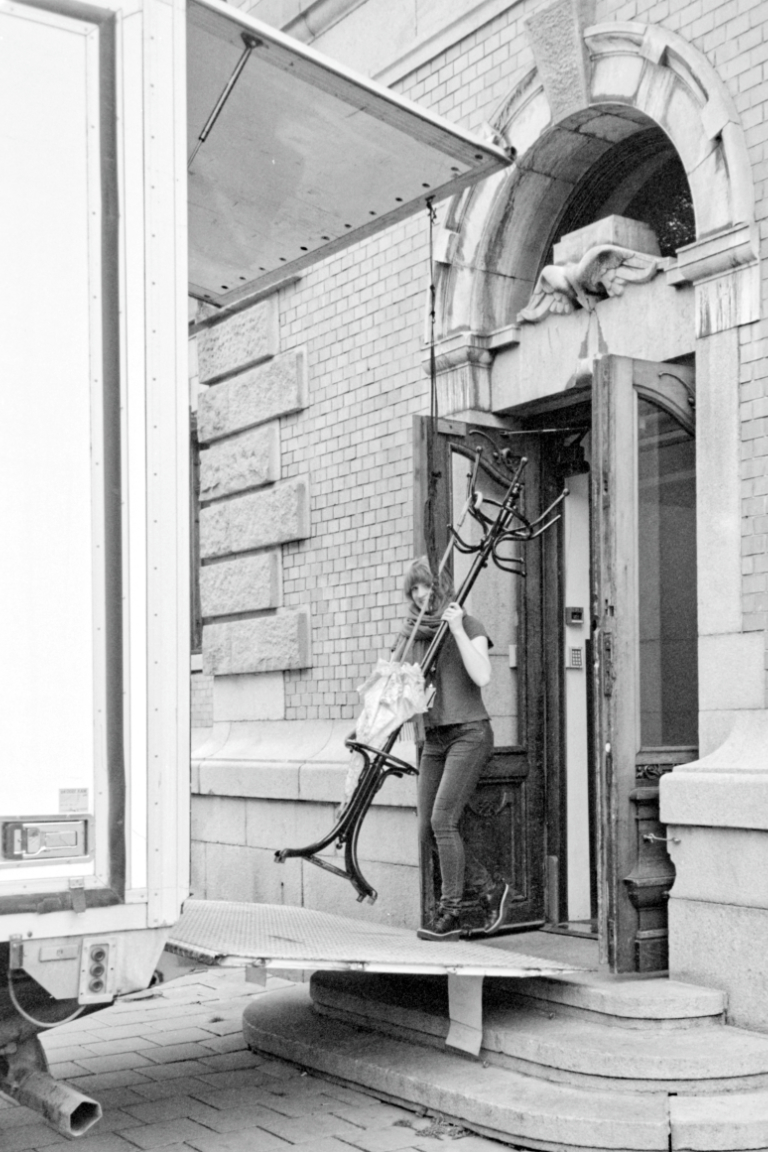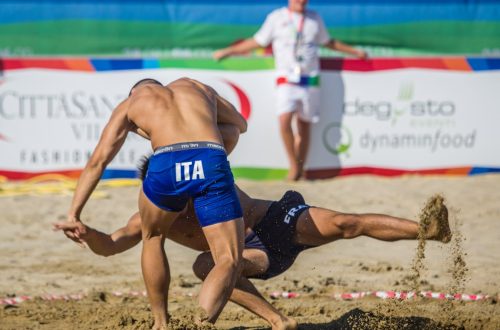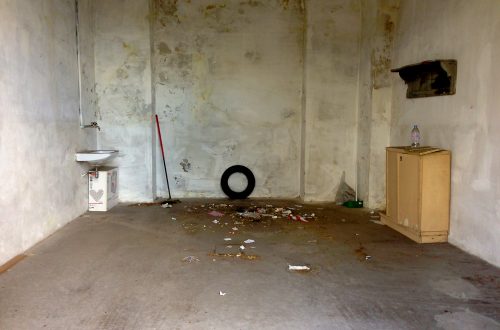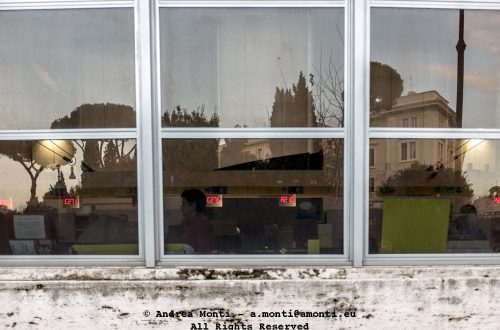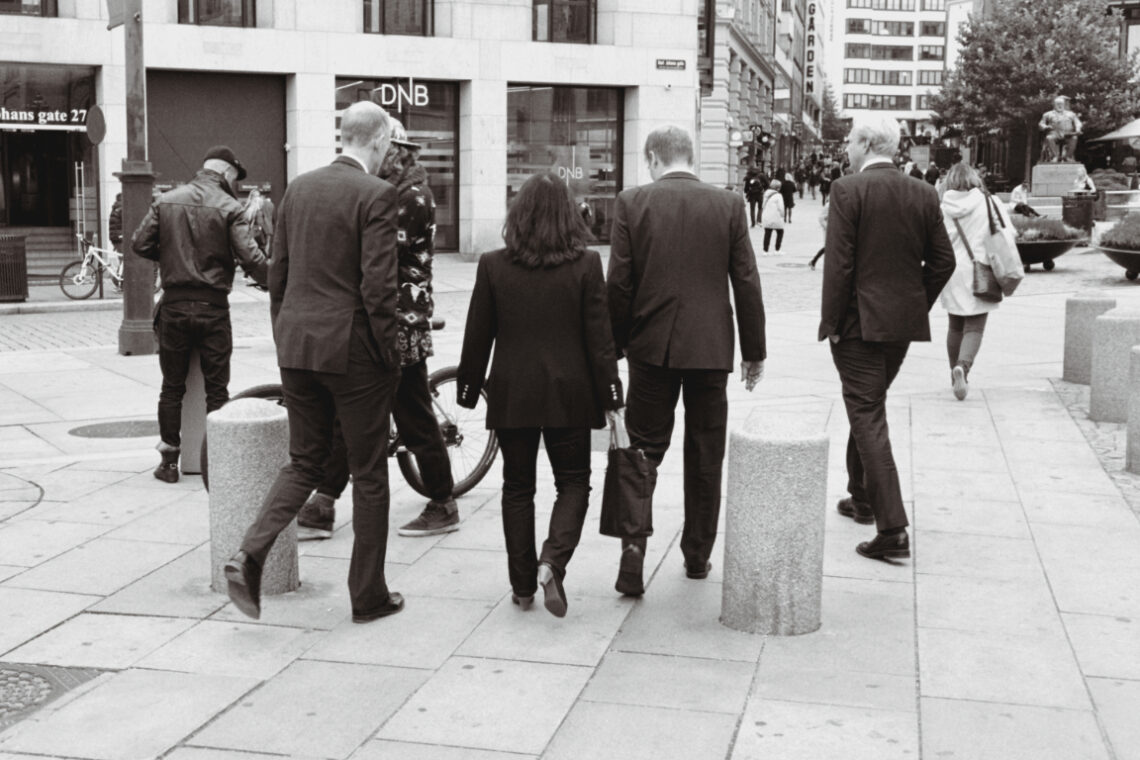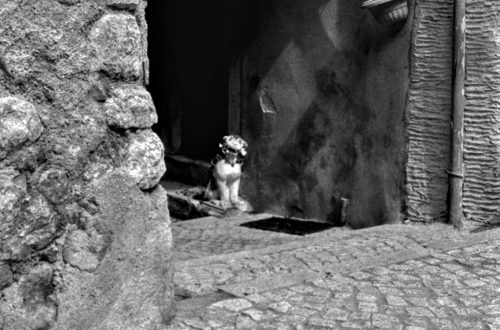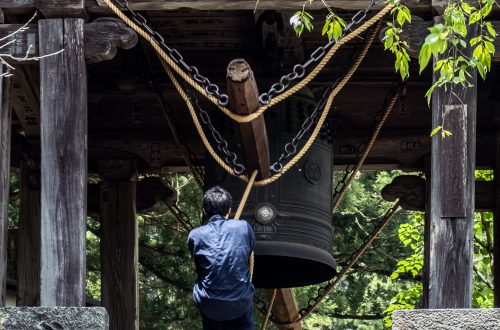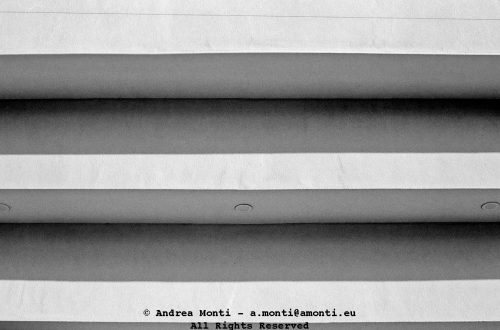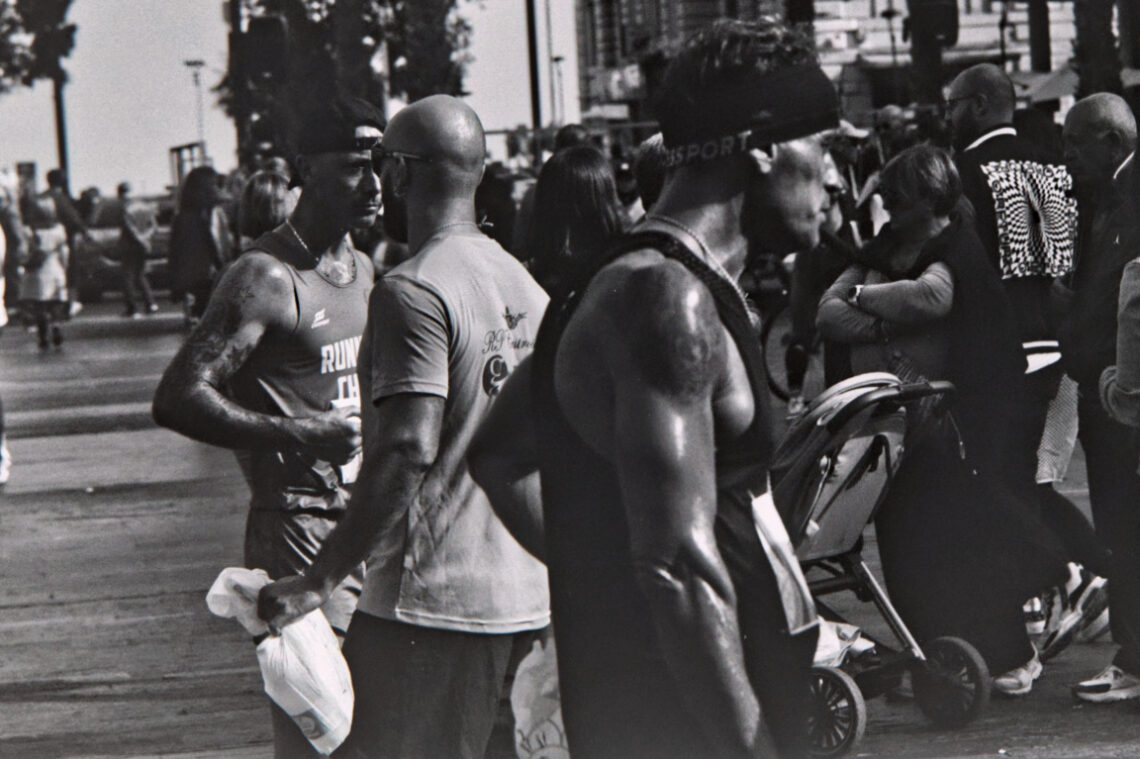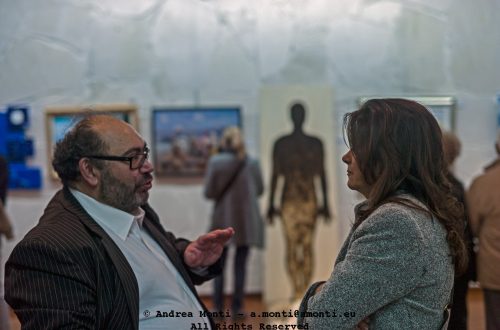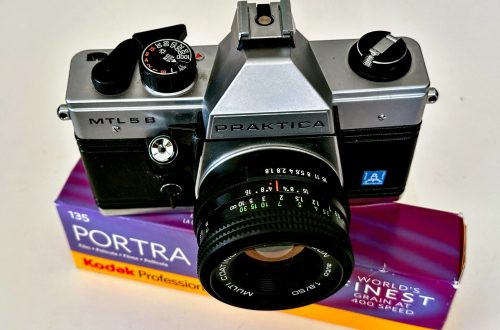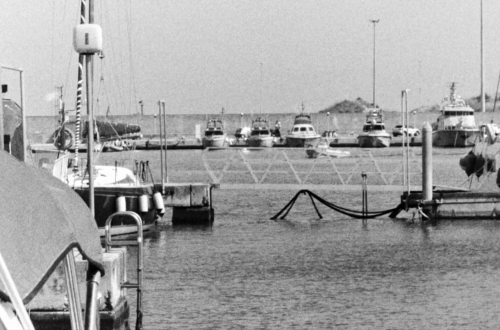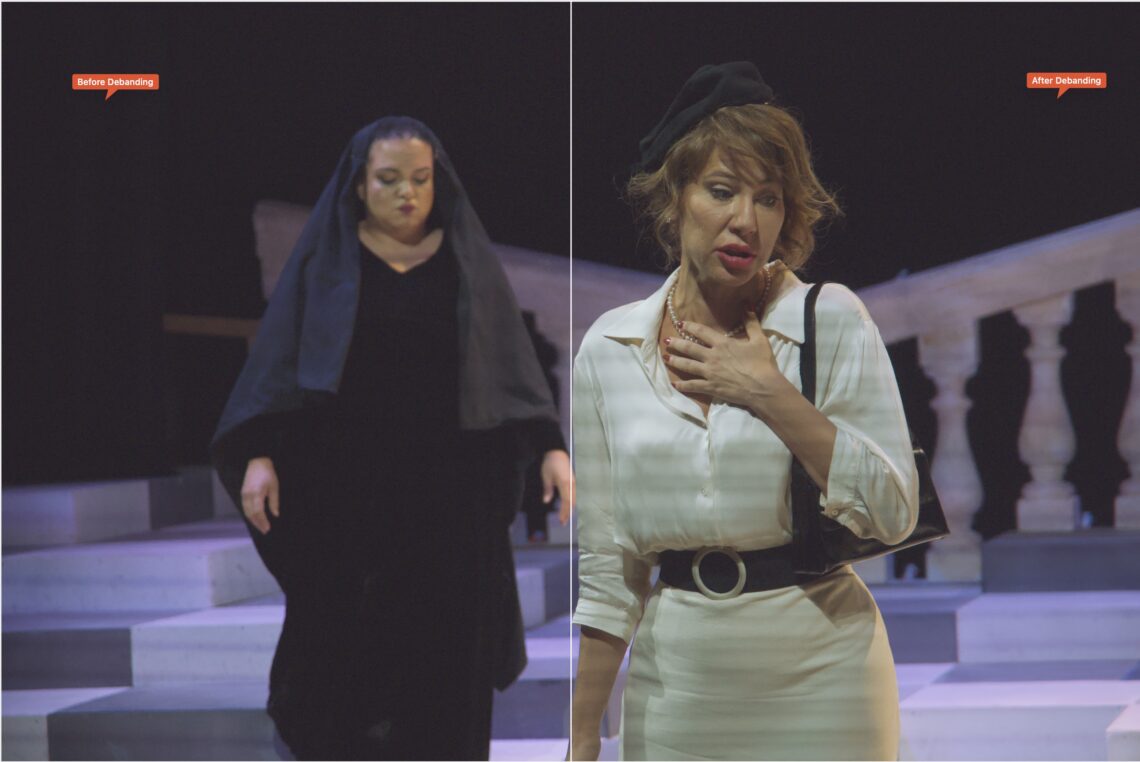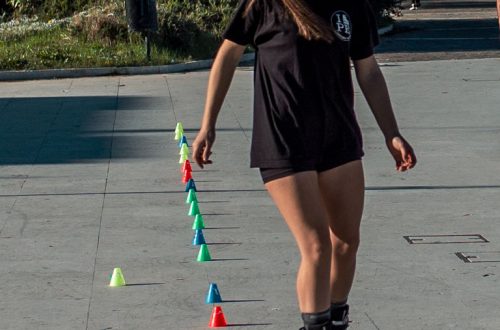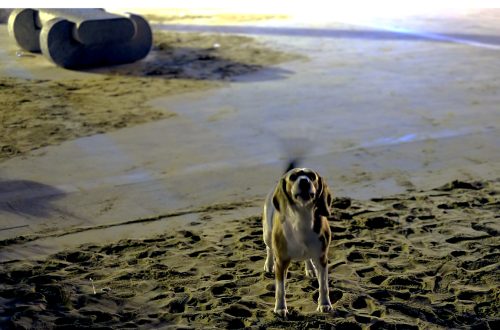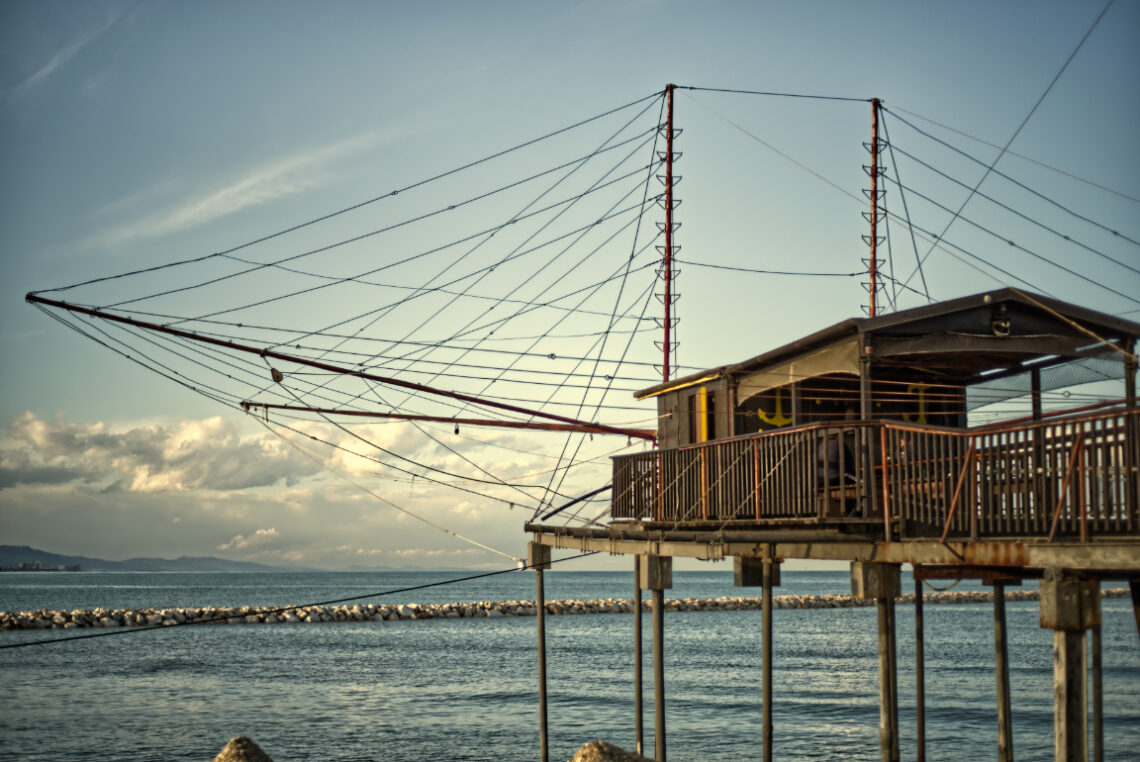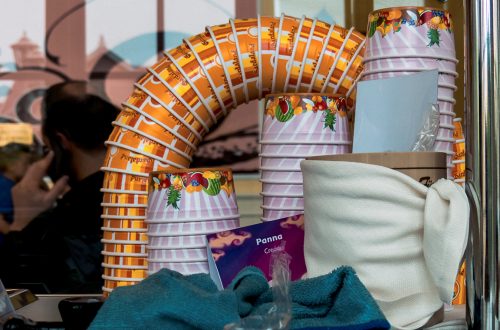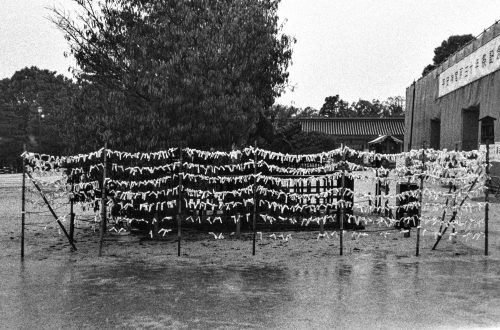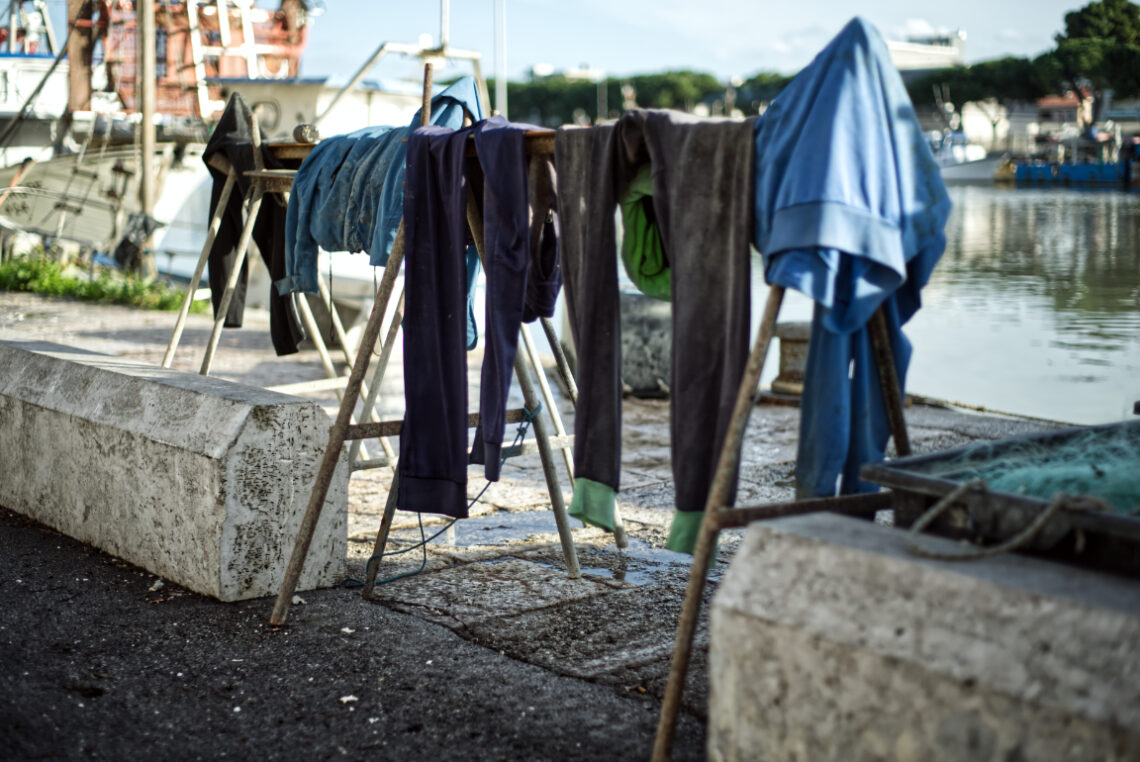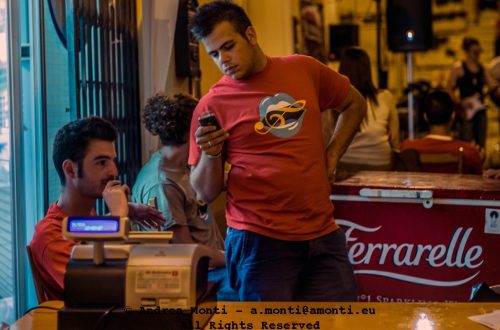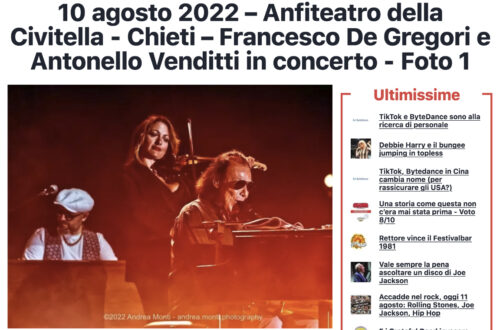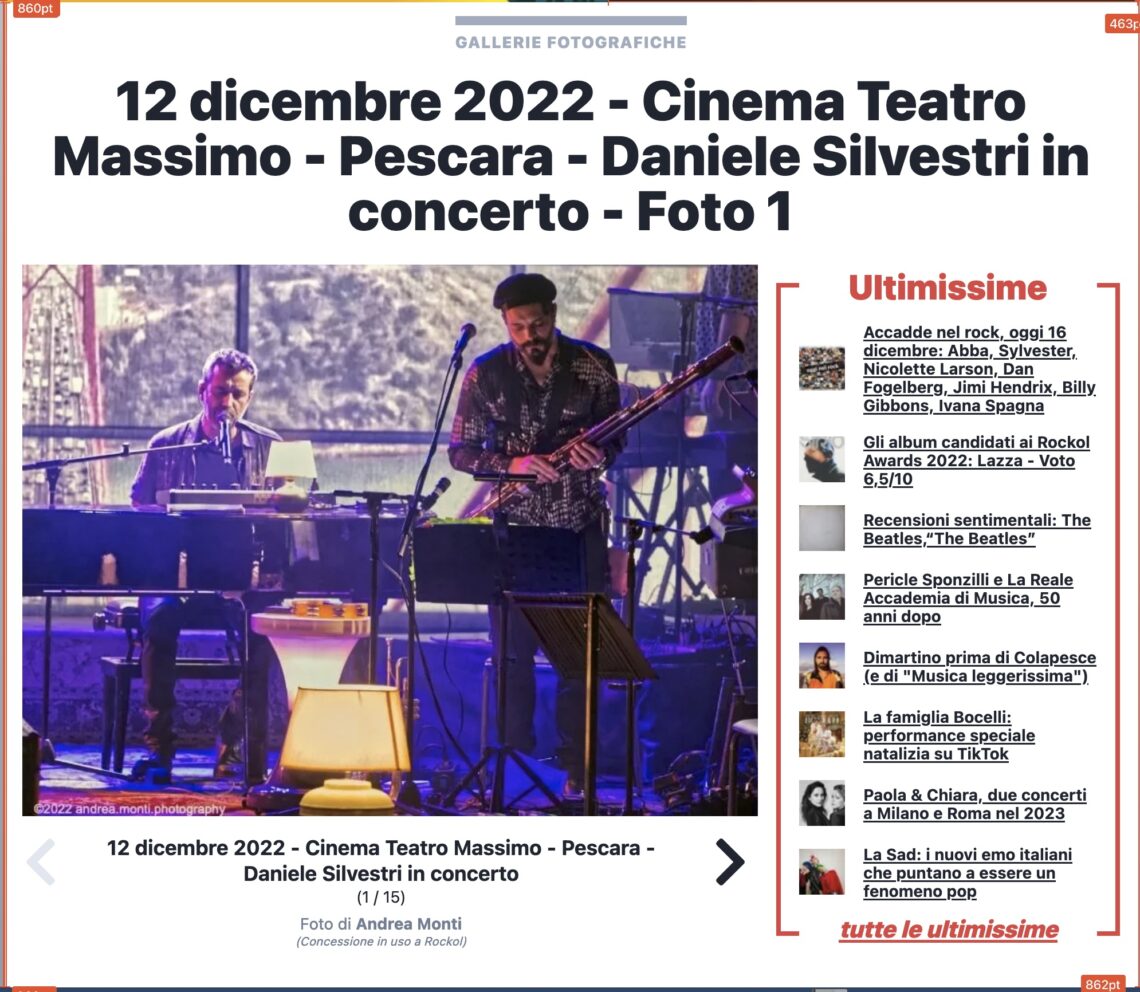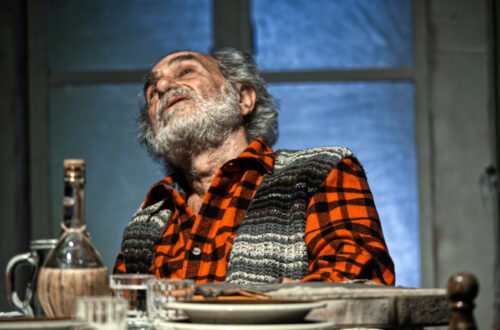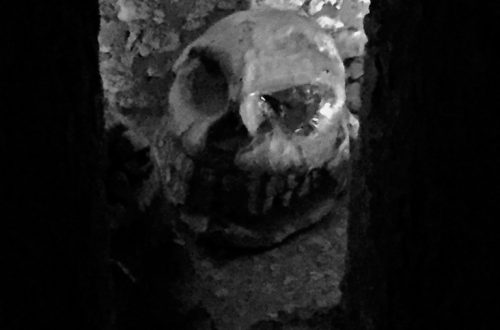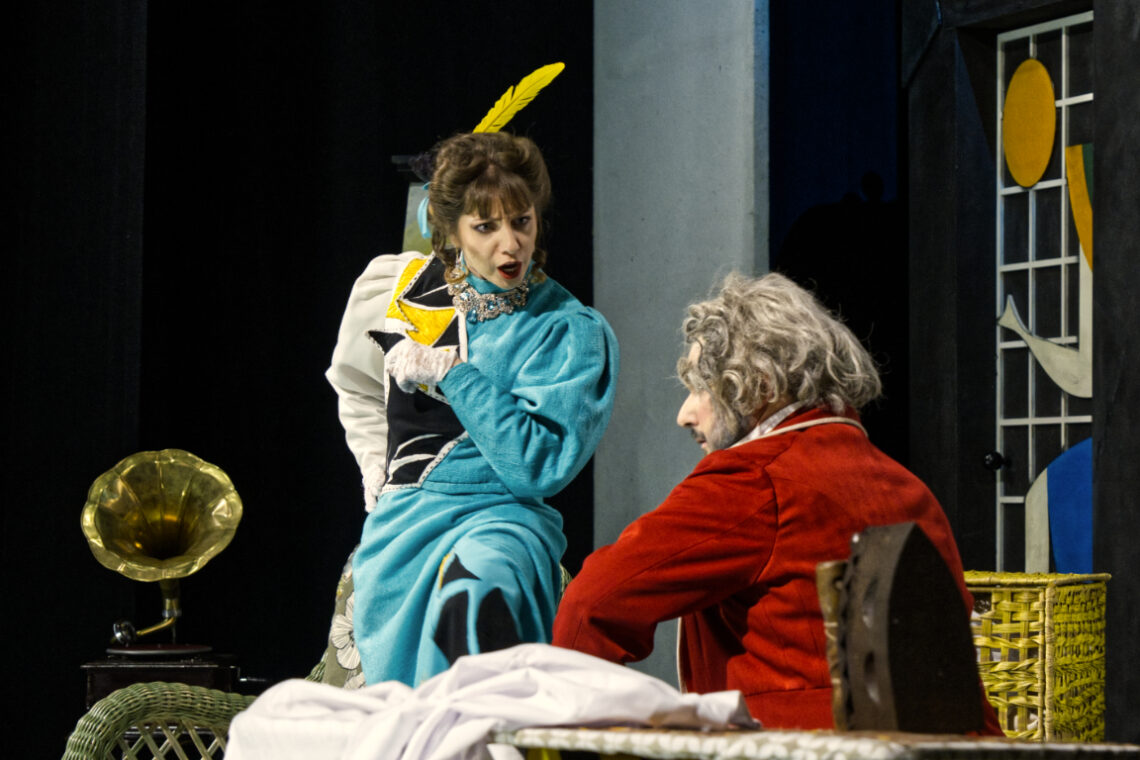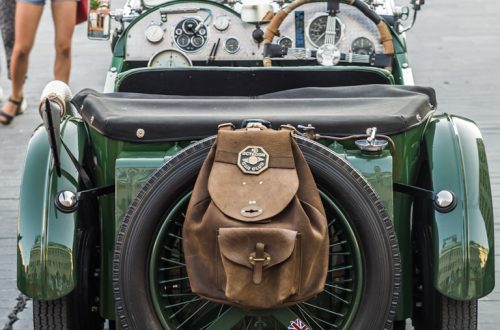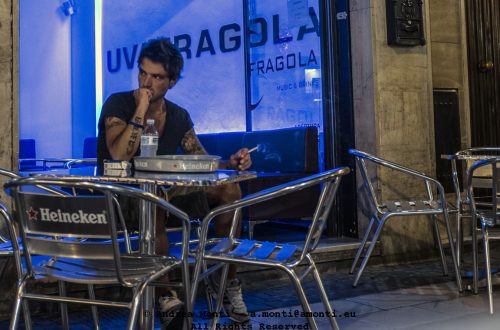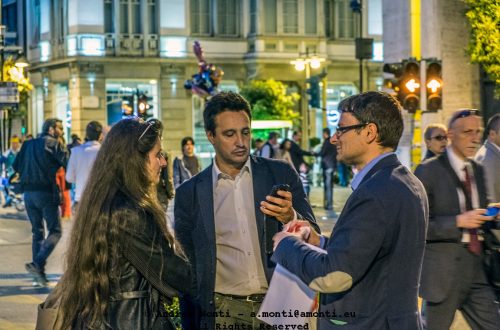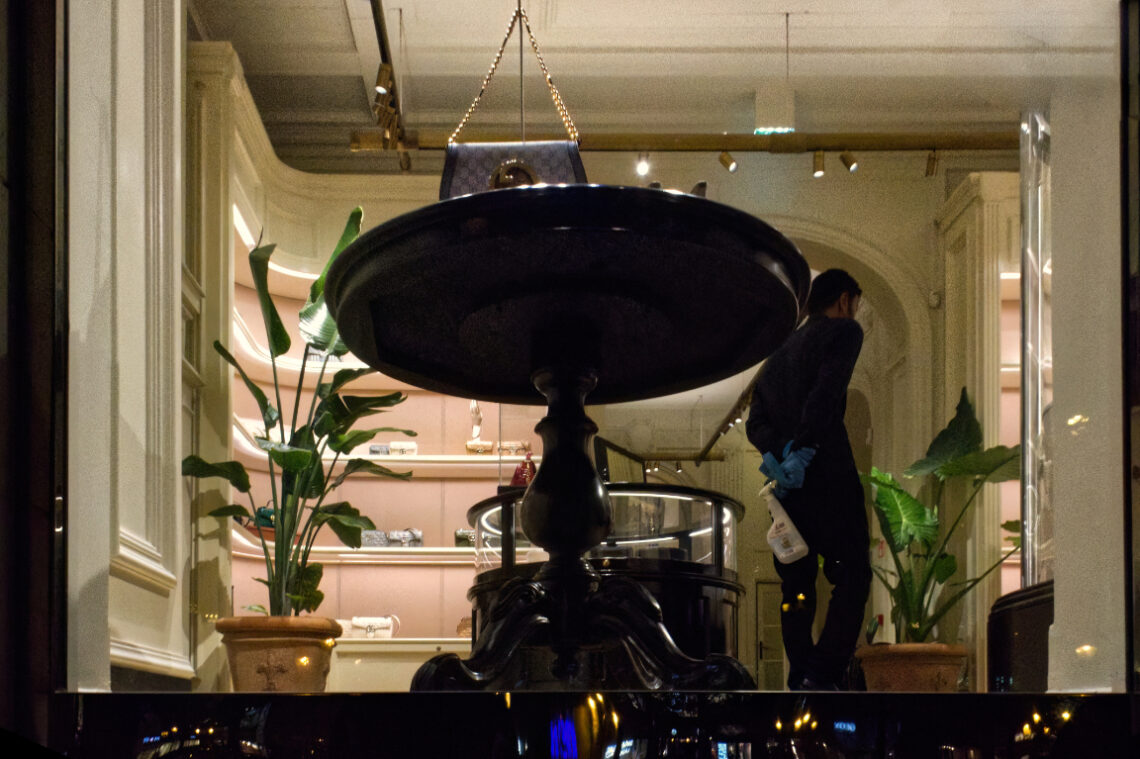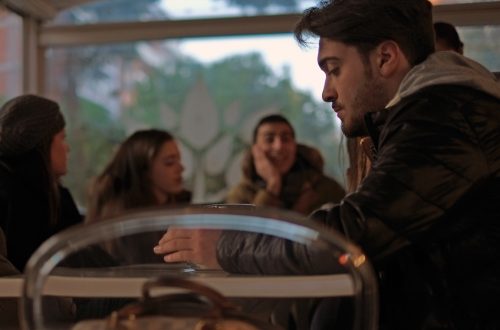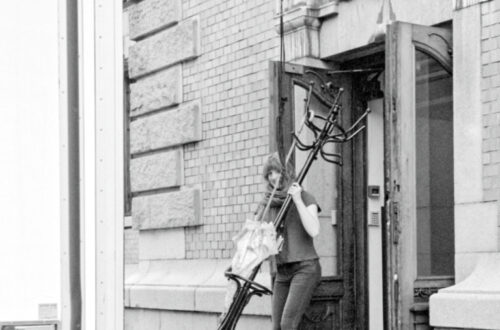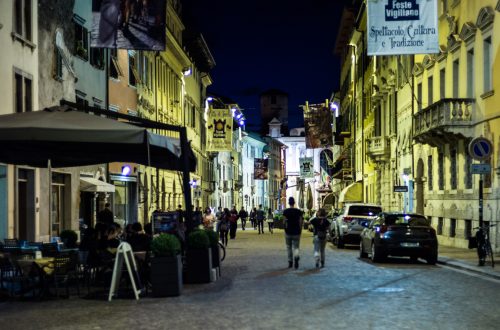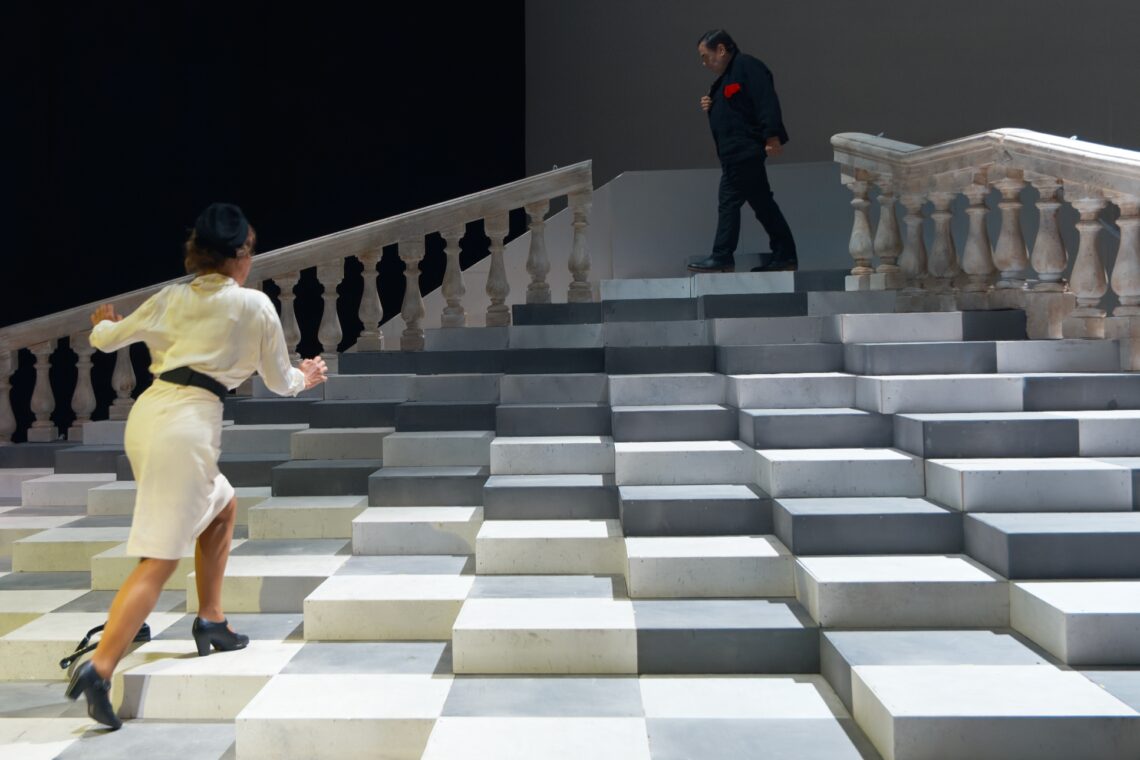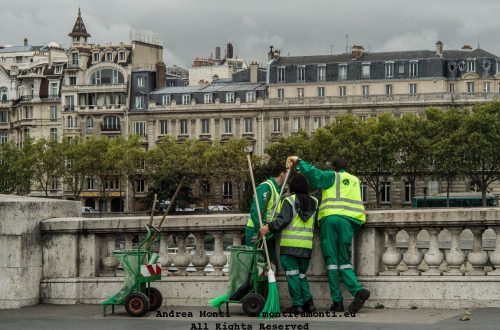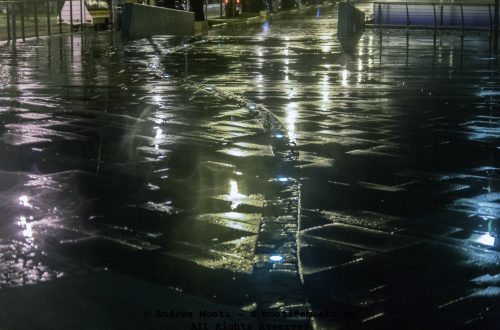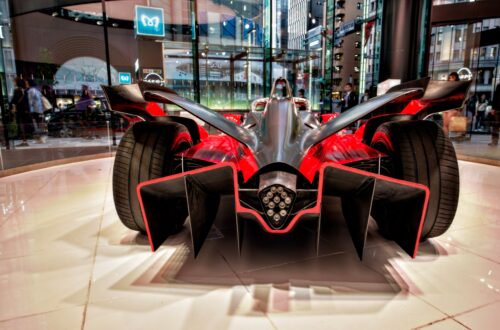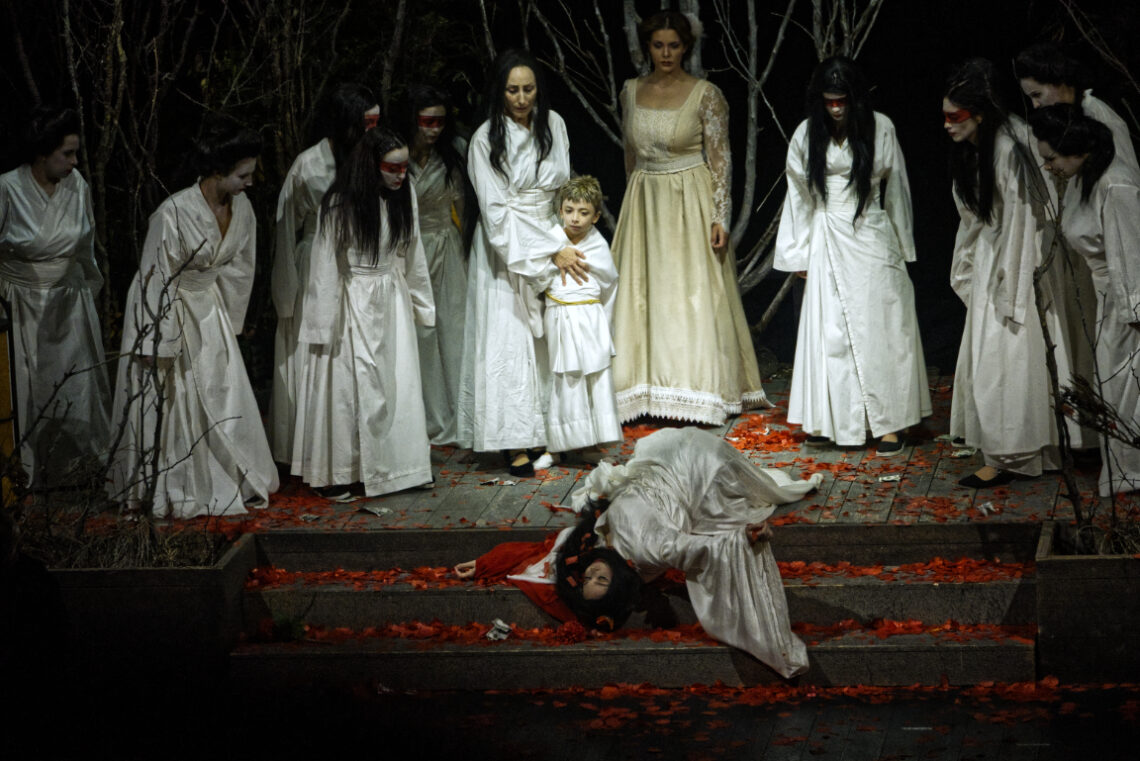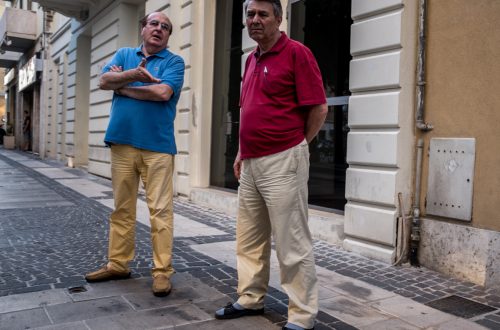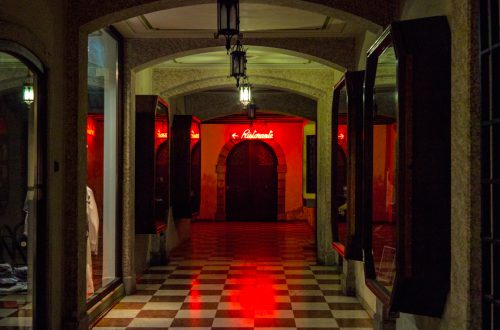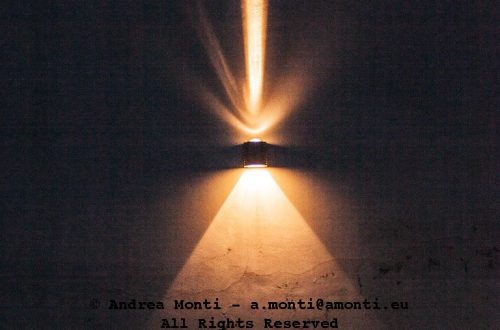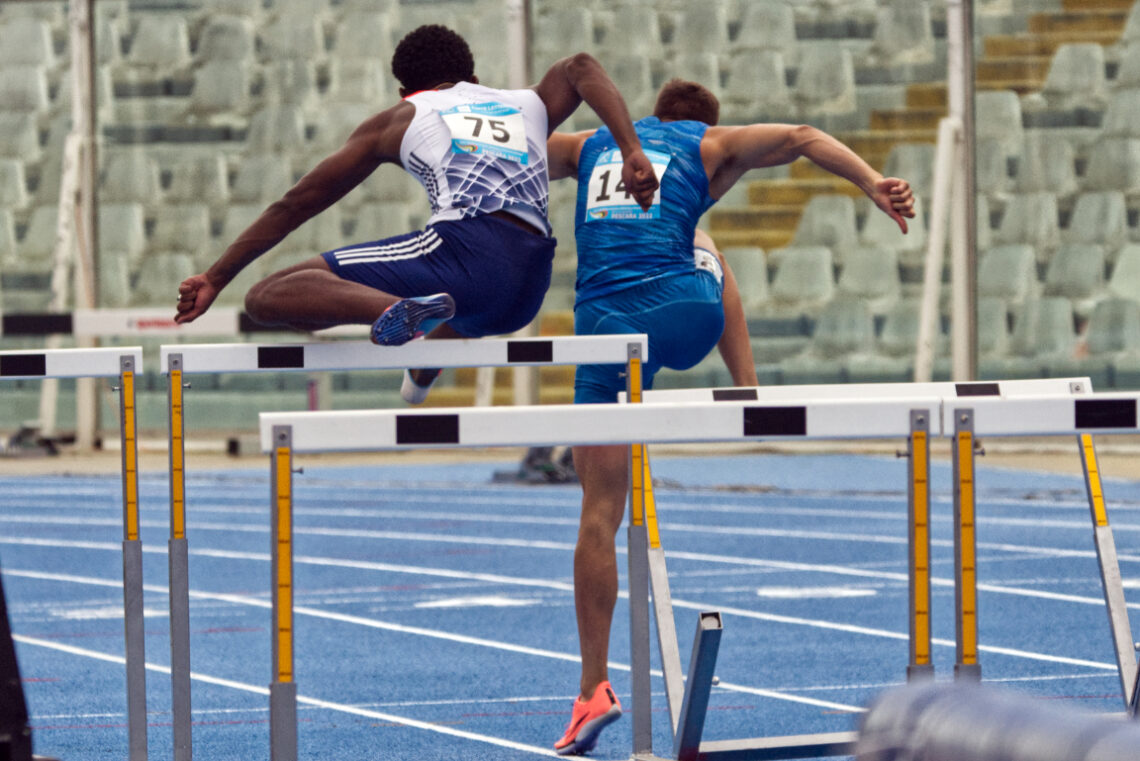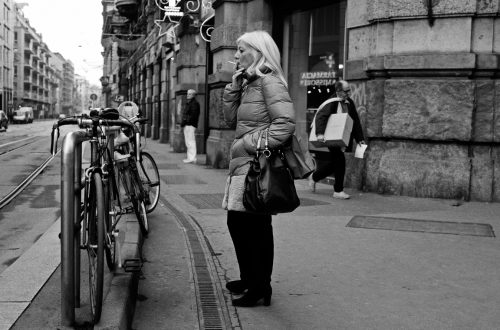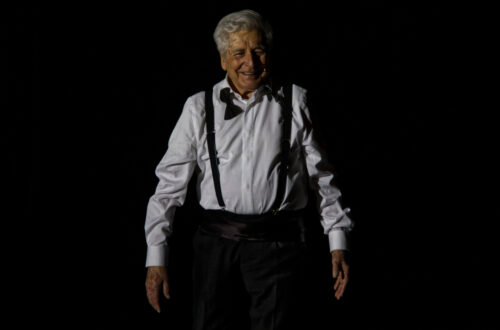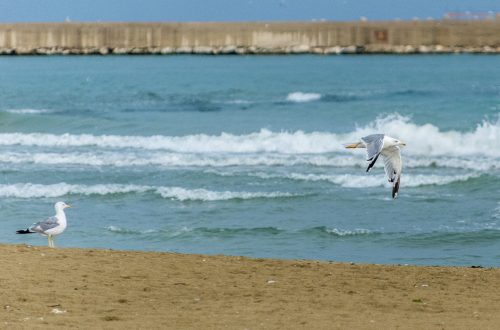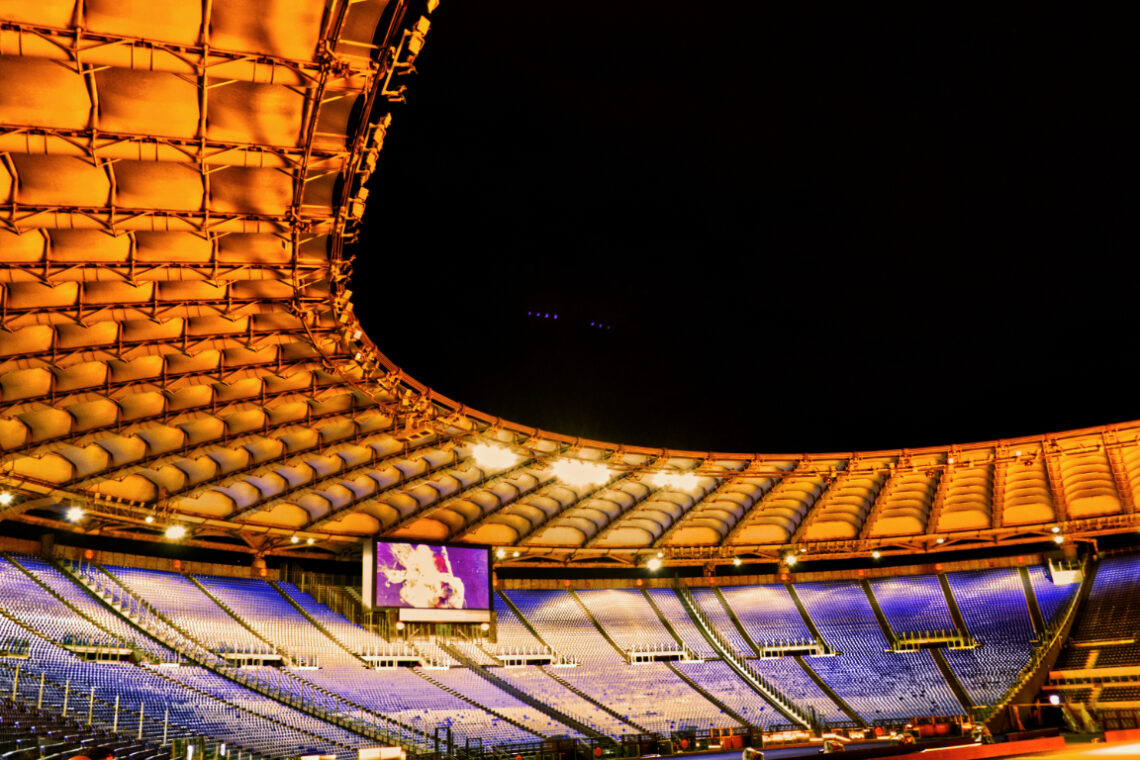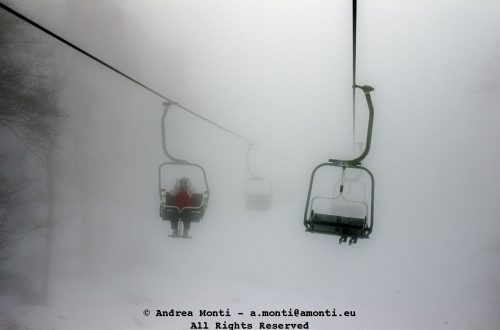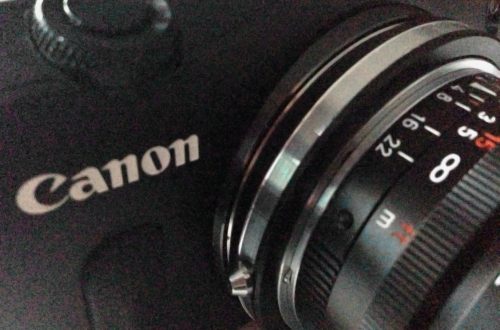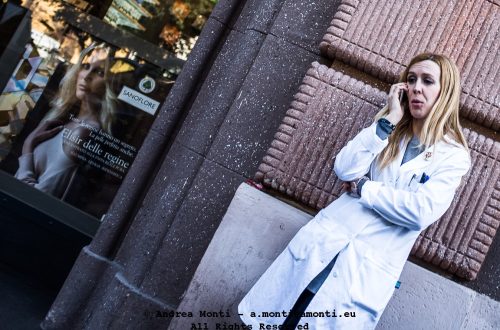-
Abstract
There’s a particular pleasure in encountering an image that resists immediate recognition. This photograph—an interplay of industrial forms, bolts, struts, and cylindrical elements—sits somewhere between documentation and abstraction. Strip away the context, and it becomes less about what these structures are and more about what they do visually: dividing the frame, catching light, and setting up a rhythm of repetition and interruption. The composition is rigidly symmetrical along the vertical axis, yet it doesn’t feel overly formal or sterile. The imperfections—paint chipping, scuffs, a touch of grime—are what give it character. These blemishes remind us this isn’t a CAD rendering but a real, weathered object, doing its job in the…
-
Niccolò Fabi – Meno Per Meno Tour 2023 – Live@Teatro Massimo, Pescara
Covering Niccolò Fabi’s concert for Rockol, gave me the opportunity to test an X-T4 with an XF 150-600. The image quality is on a par with the X-T3. This was to be expected. However, I have some reservations about the autofocus. The lens also needs to be examined in more detail before I can form an informed opinion.
-
Partner in Glam
I framed this shot fast — the kind of street moment that gives you three seconds to get it or lose it. What pulled me in wasn’t the man alone, nor the advert behind him. It was the convergence. His physical presence, heavy and brooding, intersecting perfectly with the oversized face of the model. Two expressions, one contemplative, one seductive, unintentionally in conversation. The poster reads Partner in glam. A marketing line, forgettable in most contexts. But set against this man, seated in shadow, caught mid-thought, it takes on irony. Or honesty. Depends how you read it. Technically, the photo leans hard into contrast. Shot in direct sunlight, the shadows…
-
A Frame Within a Frame Within a Frame
The irony didn’t hit me until I developed the roll—an expired Ilford XP2 Super 400 that had been lounging at the bottom of a drawer for years. Shot with a Voigtländer Bessa R2 paired with the Nokton 35mm f/1.4, this image is as much a meditation on layers as it is a commentary on isolation. What initially looked like an ordinary street shot—girl on a call, perched on a windowsill—turned out to be a trifecta of enclosures: her physical pose wrapped in posture and winter clothing, set within the architecture of the window, itself encased in the framing of the building. Beyond, the city reflects itself, ghostlike, on the glass—another…
-
Coats
Getting rid of film noise is a recurring necessity when shooting film at (relatively) high ISO.In this photo the negative was digitised using a Pentax K-1 Mark I and a Pentax FA 100/2,8 Macro. Then, before inverting the curves to make a positive, it was fed into DxO PureRaw3 (by the way, it properly recognized the camera and lens). Finally, in Affinity Photo Develop Persona’s Details tab, once the curves were inverted, it was necessary to tweak the Noise Reduction options by setting Luminance to 50% and Luminance Details to 0.
-
Powermeters
This photo was taken with an Ilford XP2 Super 400, a Voigtländer Bessa R2 and a Voigtländer 35mm f/1.4 II lens. The film was digitised using a Pentax K-1 and a Pentax FA 100/2.8 Marco mounted on a custom-built rig. The resulting raw was processed in Affinity Photo. In Develop Persona, first the image was turned in black and white, then the master curve was intverted and finally exposure, contrast and other parameters were tweaked.
-
Editing a photo taken with a Carl Zeiss Jena 135/4 Sonnar and a Fuji X-T3
A vintage Carl Zeiss Jena 135/4 Sonnar whose RF mount has been replaced with a Fuji X mount by Adriano Lolli (https://www.adrianololli.com).Coupled with a Fuji X-T3, it delivers pleasant results. Post production is highly subjective, so the final outcome might no be ‘acceptable’ to some taste. Still, the lens is very good.
-
A sample of the Carl Zeiss Jena 135/F4 Sonnar and a Fuji X-T3
This photo was taken with an old Carl Zeiss Jena 135/4 Sonnar whose Contax RF mount was replaced by a Fuji X mount by Master Adriano Lolli.
-
Floating
This image was born out of a fascination with stillness in the midst of implied movement. The mannequin — suspended, curled, caught in an almost foetal position — seems to drift within a capsule that looks as though it could be orbiting somewhere far beyond Earth. The large, circular light behind it could be a porthole, a hatch, or simply a stage light; its blinding white obscures what might be beyond, giving the scene a surreal, detached quality. Technically, the biggest challenge was exposure. The extreme contrast between the brilliant backlight and the darker figure risked losing detail on both ends. I chose to protect the highlights, letting the shadows…
-
Unattainable 1:1 magnification with the JJC FDA S-1 and Micro Nikkor 60 2,8
The JJC FDA S-1 does not allow a 1:1 magnification with the Micro Nikkor 60 2,8. It only reaches a smaller factor (about 80%.The probable reason is the excessive lenght of the original step-down ring.Using a thinner step-down ring, as it has been done in this video, does not improve the outcome.
-
Processing a DSLR Digitised Black and White Film with Affinity Photo
This videos shows how to process a Black and White film digitised with a DSLR camera.The process starts from opening the RAW file in Affinity Photo’s Develop Persona. In short and in order, the steps are:
-
DSLR film scanning: episode three
This is, by far, the most pleasing result I have ever had from digitising a film negative with a DSLR.Contrary to many suggestions found on Youtube, I did not invert the negative RAW curve by tweaking the Master RGB option. I did it, instead, channel-bychannel minding each clipping point. This approach allowed for a better reproduction of the grey tones, and in the end a fair result.
-
Another attempt at DLSR film scanning
Still trying.I digitised the negative with a Pentax K-1 and the FA 100 2.8 Macro lens using the JJC clone of Nikon ES-2. Postproduction is done in Pixelmator Pro. I used a Nikon 35TI and a Kodak BW400CN to take the original photo. Strangely enough, the JJC does not allow a 1:1 ratio with the Micro Nikkor 60 2.8.The instructions advise to mount the 62mm to 52mm step-down ring, the #2 52mm barrel-shaped tube and finally the film holder. These instructions are clearly wrong, as it is not possible to get 1:1 magnification with this setup.So I removed the tube and mounted the film carrier directly on the 62mm to…
-
An attempt at DSLR-made film digitization
This is the first usable result of the attempt to DSLR-scan films. I tried several approaches, including the standard tripod holding the camera perpendicularly to a flat, LED-lighted surface. However, I finally went for a different solution: a horizontal rig with two moving plates, a micrometric head holding the film and three-axis and a panoramic head holding the camera.
-
Pixelmator Pro Debanding and Electronic Shutter
Pixelmator Pro Deband feature does not work on banding caused by the well known electronic shutter lag. The Deband feature has not been advertised as working also with ES-induced banding, so the fact that it can not handle it is not a bug. However, this limit seriously reduces the appeal of the new feature. I have flagged the issue to Pixelmator Pro Support: currently, they are out of work, but eventually, they should get back to me with some news. Good news, hopefully.
-
The Silent Geometry of a Trabocco
This image came out of a walk I almost didn’t take. The light was beginning to fall into that uncertain hour, not quite golden but leaning into it, with a softness that flatters without deceiving. I was drawn to the trabocco — that wooden skeleton of fishing history jutting into the Adriatic like a forgotten broadcast antenna. Technically, the image lives and breathes in its lines. Everything points outward — cables, poles, railings — a quiet explosion of geometry pushing against the calmness of the sea. The house, slightly off-centre, serves as a visual anchor, balancing the thrust of the lines while allowing the scene to feel alive, not over-symmetrical.…
-
Fisherman’s Fatigues
I shot this one late in the day, when the light had softened just enough to graze the worn textures without flattening them. The fatigue in the title isn’t poetic—these clothes, half-limp, half-hardened with salt and use, are the remnants of someone’s labour, someone likely still out at sea. I didn’t stage anything. These were just there, draped across makeshift wooden trestles, drying under the weight of their own exhaustion. What makes this image work technically, for me, is the tension between stillness and implication. Nothing moves in the frame, yet everything speaks of motion just ceased—pulling ropes, lifting crates, hours on a rolling deck. The shallow depth of field,…
-
Daniele Silvestri – Teatri 2022 – Live@Teatro Massimo, Pescara
This is the Daniele Silvestri’s Teatri 2022 coverage I did on behalf of Rockol.it using good old Nikons (a D610 with the Sigma 150-600 contemporary and a D750 with a Nikkor 24-120). As a matter of personal taste, I still like a reflex more than a mirrorless camera. The possibility offered by the latter to shoot in total silence with the Electronic Shutter is invaluable in specific contexts such as classical concerts or theatrical plays, nowthistanding the downfalls (banding and distorted images). However (and, once again, this is a matter of personal opinion), a reflex still allow a better connection with the environment at least thanks to the optical viewfinder.…
-
Norina shouts at Don Pasquale
This picture is part of the reportage I did for Gaetano Donizetti’s Don Pasquale, featured on December 11, 2022, at Teatro Marrucino. It has been the chance to experiment a few tricks to avoid the banding effect caused by the LED pulse frequency and the sensor’s delay in EFC is used. I chose to go for time rather than aperture priority mode. I also set the shutter speed at 1/50, as suggested in many forums, and the trick worked. In some cases, banding was still present, but it was insignificant. I also tried to shoot in full manual (leaving only the focus in auto.) Some pictures ended up overexposed, and…
-
Cleaning the Tabernacle
-
Turiddu repeals Santuzza
This is a photo taken from the reportage I made for the Teatro Marrucino during the première of Cavalleria Rusticana by Pietro Mascagni. It captures the moment Turiddu (Piero Giuliacci) abandons Santuzza (Alessandra Di Giorgio), who —in turns— begs him in vain to change his mind. Image quality isn’t exceptional: unlike other cases, where the Fuji X-T3/Fujinon XF 16-80 pairing provided excellent results, this time it didn’t perform at its best, probably due to the choices on the scene lights.On the contrary, the composition is particularly successful.Turiddu is in the centre of the upper part of the picture. The railings of the staircase lead the eye towards him. Stantuzza’s dynamic…
-
The Death of Cio-Cio san
The final scene of yesterday’s Madama Butterfly’s ‘Prima’ at Teatro Marrucino. Opera photography is always a delicate dance between anticipation and reaction. The photographer must respect the performers’ craft while being acutely aware of the unfolding drama, ready to translate it into still imagery that holds the same emotional weight as the music itself. In this frame, taken during the tragic denouement of Madama Butterfly, the composition works almost like a Renaissance tableau — each character positioned with clear intention. The central focus rests on Cio-Cio-San’s lifeless figure, draped in white and crimson, her body collapsed against the steps like a human punctuation mark. Around her, the women in white…
-
A Step Ahead
In competition, the smallest margins can mean the difference between victory and second place. This photograph freezes that idea into a single frame: two hurdlers mid-air, their bodies taut with focus and speed, the Italian athlete just one step — or perhaps half a stride — ahead. From a compositional standpoint, the image works because of its precision in timing. Both athletes are caught in almost identical positions, their arms sweeping forward, their knees high, their gazes locked beyond the hurdle. The staggered alignment creates a natural depth and tension — our eyes move from the trailing runner to the leader, feeling the implied movement and urgency. Technically, the exposure…
-
Stadio Olimpico, seen from Tribuna Monte Mario
The Stadio Olimpico is not an easy subject to photograph, especially when seen from the lofty and privileged perch of the Tribuna Monte Mario. The vantage point offers grandeur, but grandeur doesn’t always translate easily into pixels—especially under the kind of merciless lighting that the stadium seems to favour at night. From this spot, the sweeping geometry of the roof dominates the composition. Its repeating, honeycomb-like pattern glows under the sodium vapour lights, casting a heavy golden hue that floods the upper half of the frame. Below, the seating—empty and rendered in cool blues—acts as a counterweight, both in tone and texture. The effect is a split visual dialogue between…
